
Category of Astronomical Heritage: tangible immovable
Konkoly Observatory, Hungary

Format: IAU - Outstanding Astronomical Heritage
Description
Geographical position - InfoTheme: Astronomy from the Renaissance to the mid-twentieth century
Entity: 111
Subentity: 1
Version: 3
Status: PUB
Date: 2021-03-30 03:26:06
Author(s): Gudrun Wolfschmidt
Magyar Tudományos Akadémia, Csillagászati és Földtudományi Kutatóközpont,
Konkoly Thege Miklós Csillagászati Intézet,
Konkoly Thege Miklós út 15-17, H-1121 Budapest, Hungary
Location - InfoTheme: Astronomy from the Renaissance to the mid-twentieth century
Entity: 111
Subentity: 1
Version: 3
Status: PUB
Date: 2021-03-30 03:27:22
Author(s): Gudrun Wolfschmidt
Latitude 47°30’00’’ N, Longitude 18°57’54’’ E, Elevation 467m above mean sea level.
IAU observatory code - InfoTheme: Astronomy from the Renaissance to the mid-twentieth century
Entity: 111
Subentity: 1
Version: 1
Status: PUB
Date: 2018-08-05 11:09:54
Author(s): Gudrun Wolfschmidt
053
Description of (scientific/cultural/natural) heritage - InfoTheme: Astronomy from the Renaissance to the mid-twentieth century
Entity: 111
Subentity: 1
Version: 13
Status: PUB
Date: 2021-11-07 20:02:57
Author(s): Gudrun Wolfschmidt
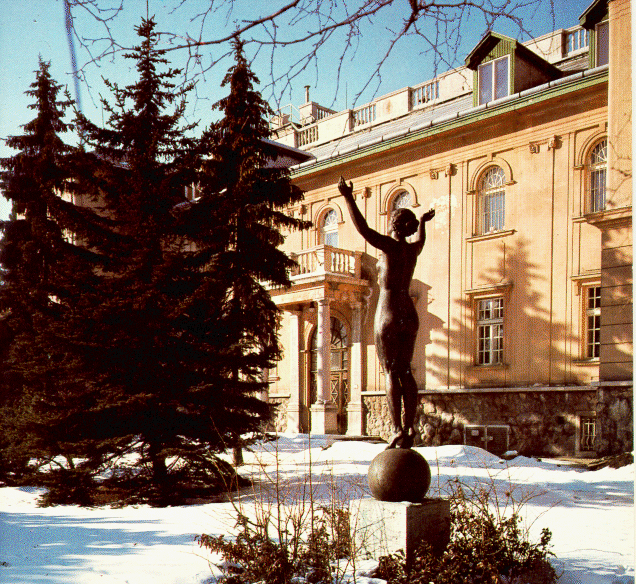
Fig. 1a. Konkoly Observatory, Main Building (Balazs)
Miklós Konkoly-Thege / Nikolaus von Konkoly (1842--1916) studied Physics and Astronomy at the Universities of Budapest and Berlin. After graduation, in 1863, he went on a tour to visit the most prestigious observatories of Europa (Greenwich, Paris, Heidelberg and Göttingen). His next tour, seven years later, took him to visit not only astronomical observatories, but also the workshops of the most prominent instrument makers of his day (Sigmund Merz in Munich, John Browning in London and Thomas Cooke in York) (Vargha & Kolláth).
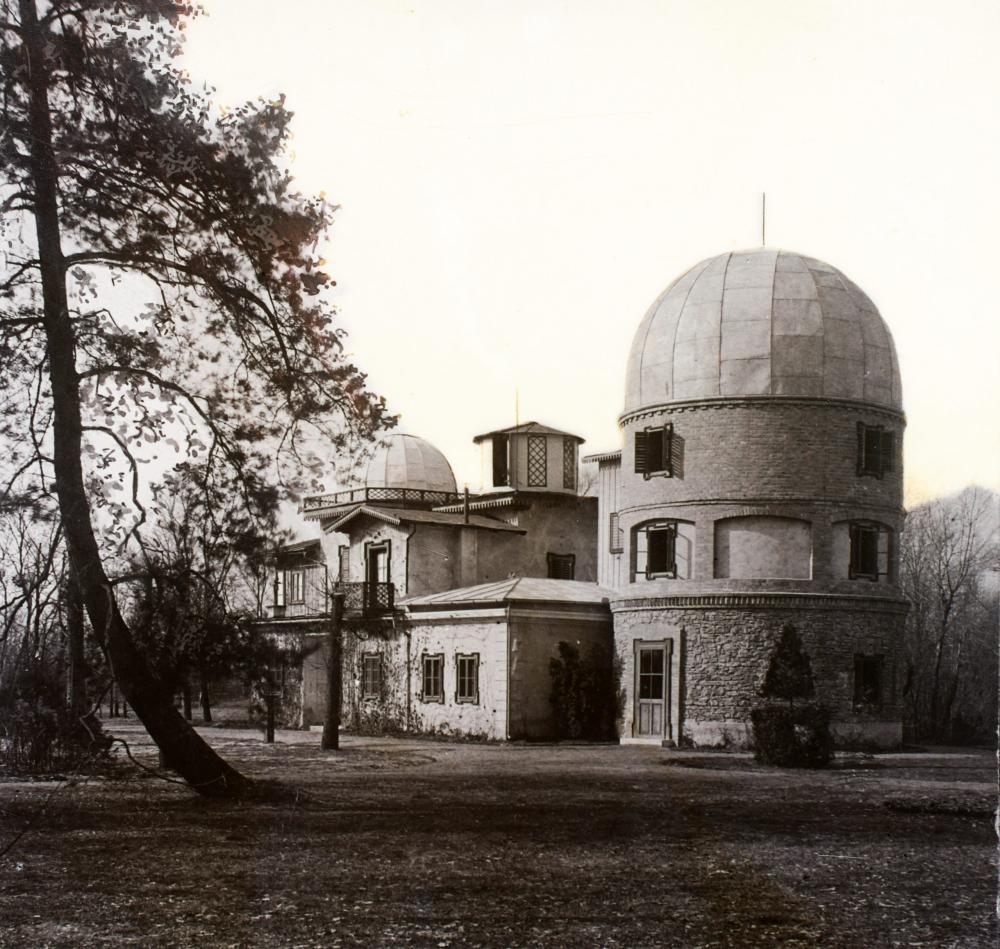
Fig. 1b. O’Gyalla Observatory (© Fortepan / Mór Erdélyi)
The O’Gyalla Observatory (now Hurbanovo in Slovakia) was founded in 1871 by the noble astronomer Konkoly as a private observatory in addition to his palace. He started his observations with a small 4-inch telescope and a meridian circle. He built a small dome for the 6-inch Merz refractor, used with a Zöllner spectroscope. In 1874, he built a 2.80-m-dome, enlarged in 1879, for his 10.5-inch Browning reflector (27cm) -- very remarkable for that time to acquire a reflector. In addition, he bought a Rheinfelder photoheliograph for photographing the Sun.
The main building was later given three additional domes. In 1881, the Browning reflector was replaced with a 10-inch Merz refractor.
Konkoly’s favorite topic was spectroscopy (comets and meteors), also photography, later photometry. Konkoly joined the international programme for stars brighter than 7.5mag by observing the zone between -15 degrees and 0 degrees. His catalogue with the results, based on Hermann Carl Vogel’s classification of the spectra, was published in 1887.
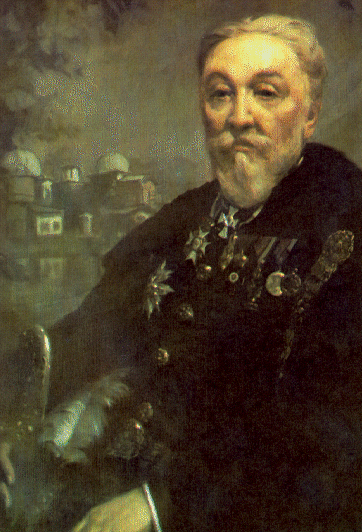
Fig. 2a. Miklós Konkoly-Thege / Nikolaus von Konkoly (1842--1916)
In the 1860s, a revolutionary transformation took place in astronomy, astrophysics was born. These new physical methods in astronomy -- spectroscopy/spectral analysis, photometry, astrophotography, and solar physics -- have stimulated the creation of a new branch of research, called astrophysics by Zöllner in 1865. Konkoly was one of the ten pioneers, who started astrophysics:
Karl Friedrich Zöllner (1829--1891), Hermann Carl Vogel (1841--1907), William Huggins (1824--1910), Joseph Norman Lockyer (1836--1920), Angelo Secchi (1818--1878), Pierre Jules César Janssen (1824--1907), Nikolaus Thege-Konkoly (1842--1916), and a little bit later William Henry Pickering (1858--1938), Julius Scheiner (1858--1913), Johannes Hartmann (1865--1936), and others. Konkoly had very close friendships with Vogel and Hartmann in Potsdam and with Max Wolf (1863--1932) in Heidelberg.
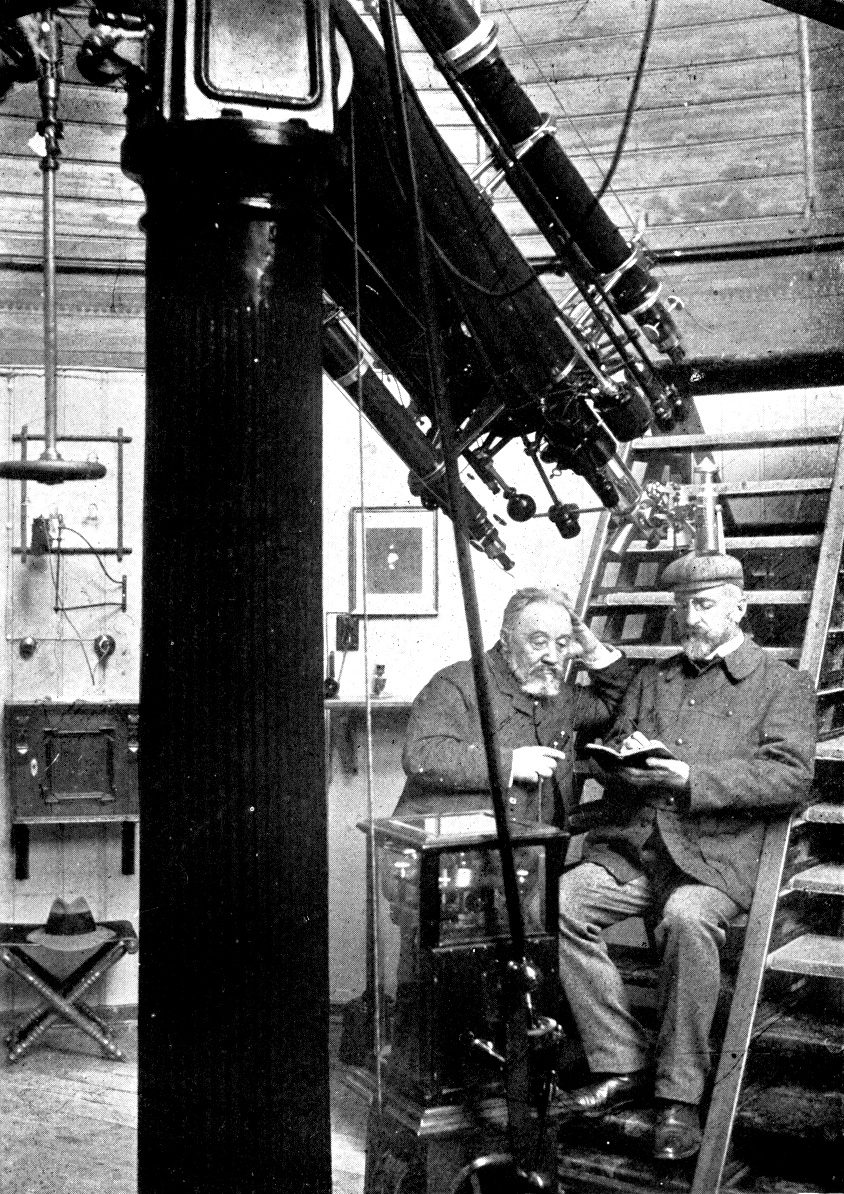
Fig. 2b. Miklós Konkoly-Thege, observing Halley’s comet with Johannes Franz Hartmann (1865--1936) of Potsdam in 1910, using a Zöllner Photometer
In 1890, Konkoly Thege was appointed director of the Meteorological Service. In addition, he organized a geomagnetic observatory in O’Gyalla, and made significant contributions.
In 1899, Konkoly Thege donated his private O’Gyalla observatory to the Hungarian State.
The Hungarian staff left when Chechoslovakia was formed in 1920. The council of Budapest allocated a property up in the hills just outside the city border for a new observatory. Everything was transferred to Budapest, Svábhegyi (Schwabenberg).
The first dome and the meridian house were ready in 1921, the main building in 1926. Finally, the large dome was ready by 1928. Since the order was made back in 1913 and advance was already paid, the Heyde firm in Dresden agreed to deliver the 60cm telescope for the original price, without adjusting it to inflation. The new Svábhegy Observatory was soon doing cutting-edge research.
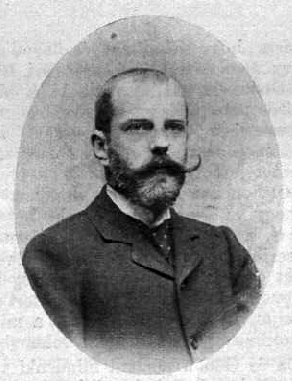
Fig. 3a. Baron Béla Harkányi (1869--1932) (Wikipedia)
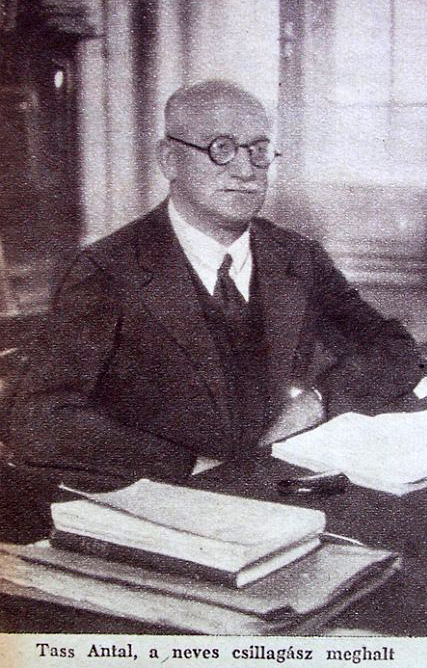
Fig. 3b. Antal Tass (1876--1937) (© Imre Visler)
Konkoly himself became the director, Radó Kövesligethy deputy director. Baron Béla Harkányi (1869--1932) was appointed as observer, Antal Tass (1876--1937) and Béla Szántó were assistant professors.
The research in Budapest had also like O’Gyalla the emphasis on photometry, especially the Ógyalla Catalogue of Variable Stars in two volumes (1916, 1935) was published.
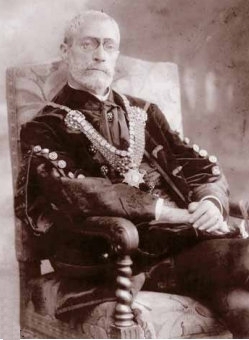
Fig. 3. Radó von Kövesligethy (1862--1934) (Wikipedia)
Radó von Kövesligethy (1862--1934) studied in Vienna, made his habilitation in Budapest in 1889 (private lecturer), in 1897 he became an associate professor, in 1904 full professor for cosmography and geophysics.
He published 15 years before Max Planck (1858--1947), in 1885 in Hungarian and in 1890 in German, a first successful spectral equation of black body radiation (cf. Balázs 2004, 2007), derived with the following properties: the spectral distribution of radiation depends only on the temperature, the total irradiated energy is finite, and in addition, the wavelength of the intensity maximum is inversely proportional to the temperature -- eight years before Wilhelm Wien (1864--1928)!
History - InfoTheme: Astronomy from the Renaissance to the mid-twentieth century
Entity: 111
Subentity: 1
Version: 17
Status: PUB
Date: 2021-11-07 20:11:11
Author(s): Gudrun Wolfschmidt
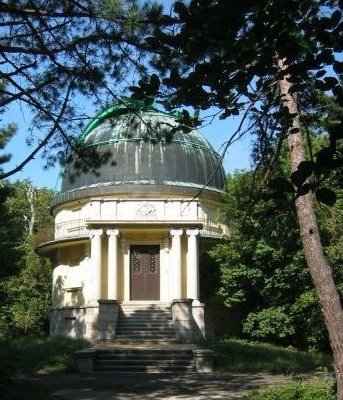
Fig. 4a. Dome of 60-cm-Reflector of Konkoly Observatory
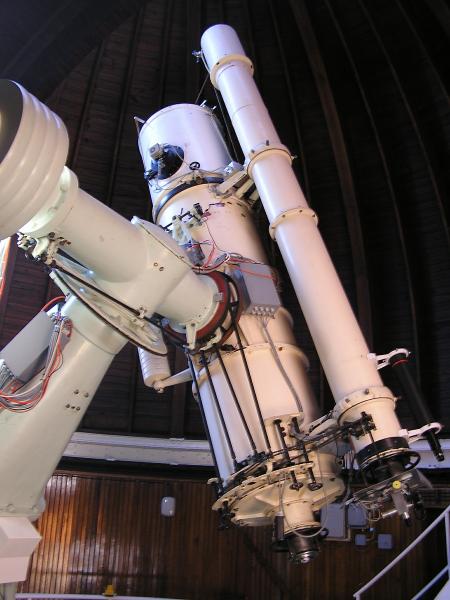
Fig. 4b. 60-cm-Reflector of Konkoly Observatory
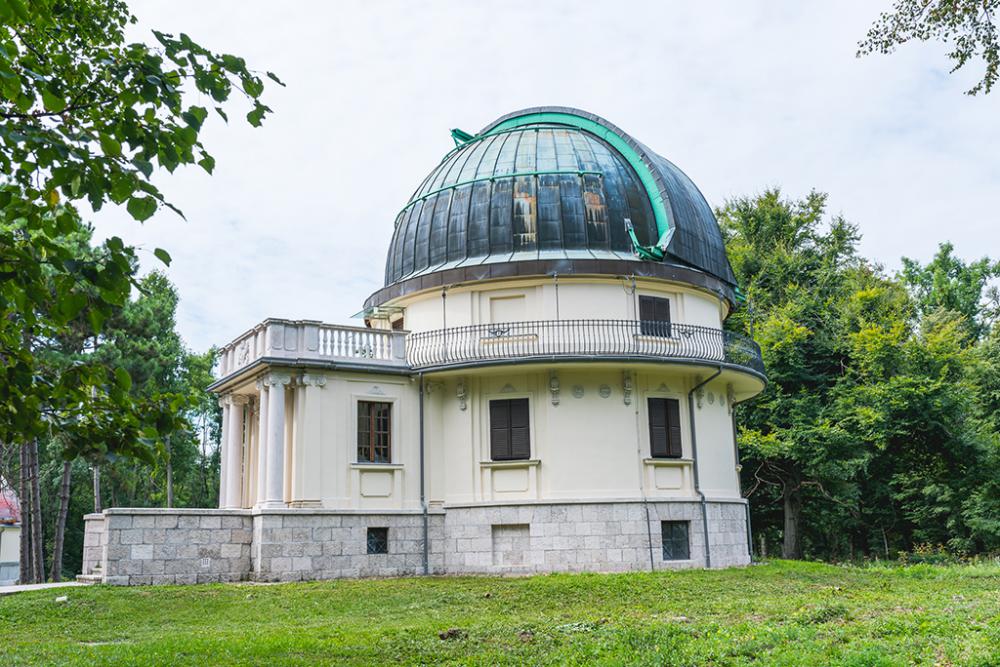
Fig. 4c. Dome of the 60-cm-Reflector of Konkoly Observatory
Instruments of O’Gyalla and Konkoly Observatory
- 6-inch refractor, made by Merz of Munich, used with a Zöllner spectroscope
- 10.5-inch reflecting telescope, made by Browning of London
- two Zöllner photometers
- Wedge photometer, made by Töpfer of Potsdam
- Photoheliograph, made by Rheinfelder of Munich
- 7-inch refractor (18cm)
- 20-cm-refractor, made by Gustav Heyde of Dresden, with two smaller photographic cameras
- 60-cm-Reflector Cassegrain-Newton (24’’) with a guiding telescope of 30cm
- 16-cm-Astrograph (f=1:14) with a guiding telescope of 19cm
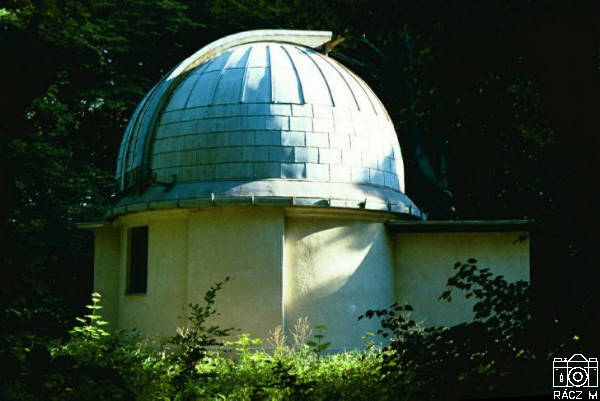
Fig. 5a. Dome of the 6-inch-Refractor of Konkoly Observatory
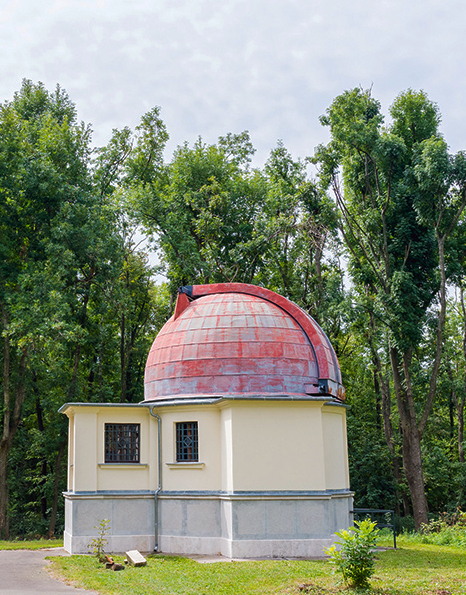
Fig. 5b. Dome of the 7-inch-Refractor of Konkoly Observatory
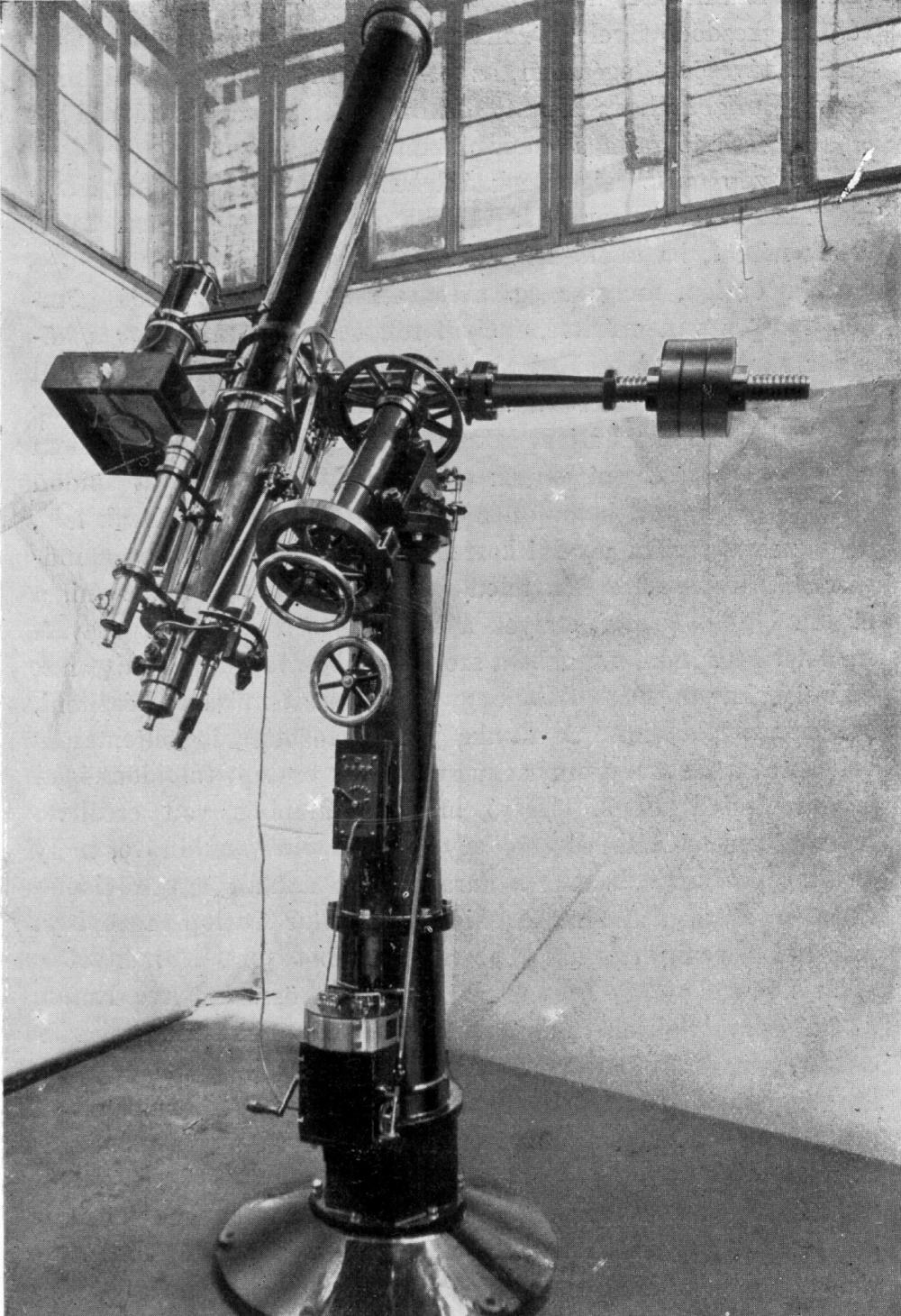
Fig. 5c. 20-cm-Refractor, Heyde of Dresden, in Konkoly Observatory
State of preservation - InfoTheme: Astronomy from the Renaissance to the mid-twentieth century
Entity: 111
Subentity: 1
Version: 3
Status: PUB
Date: 2021-11-07 20:12:50
Author(s): Gudrun Wolfschmidt
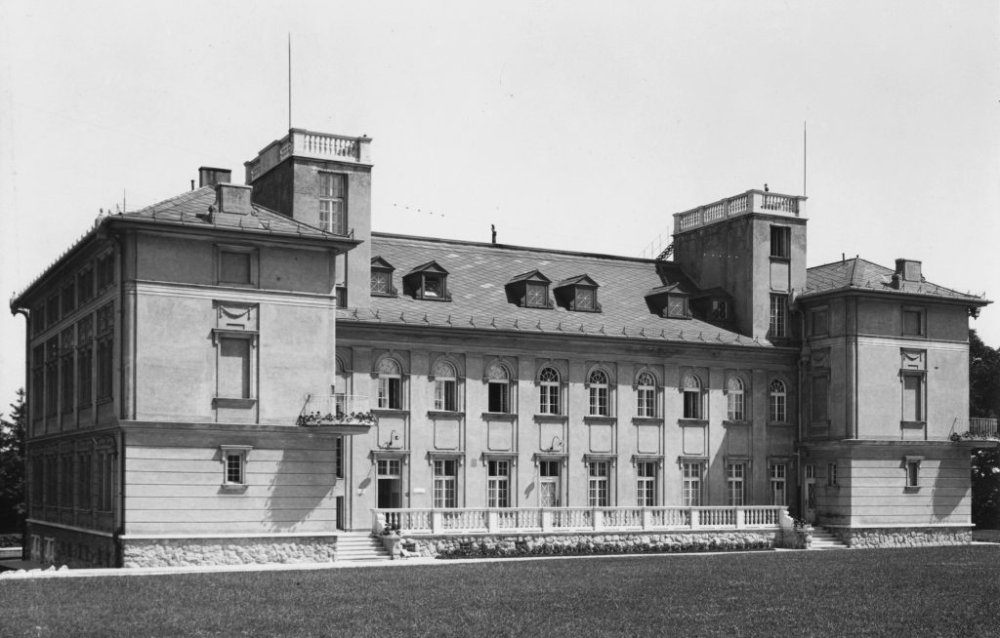
Fig. 6a. Main building, Konkoly Observatory Budapest (© Fortepan / Mór Erdélyi)
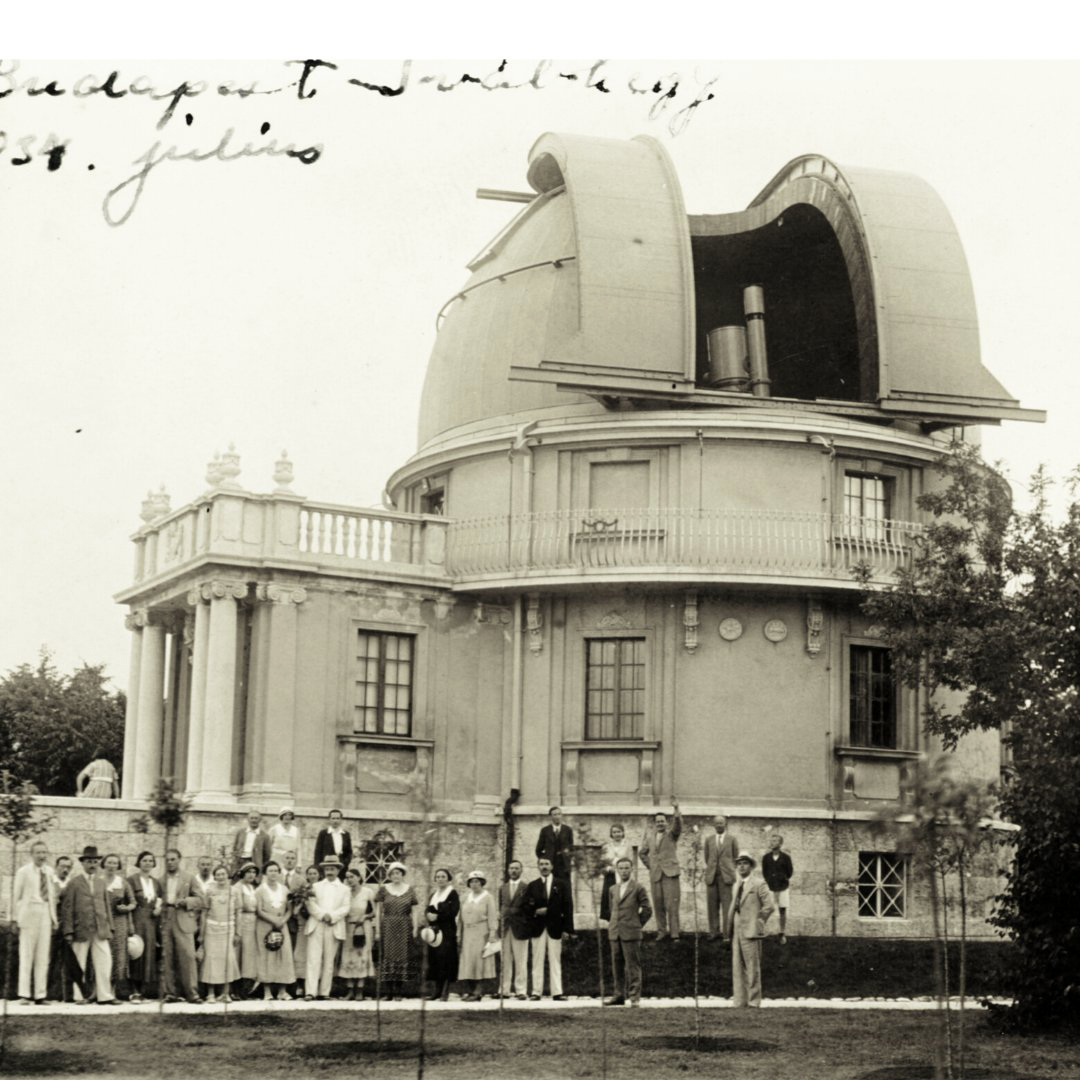
Fig. 6b. Large Dome for the 60-cm-Reflector, Konkoly Observatory Budapest (© Fortepan/Dr. Józsefné Nagy)
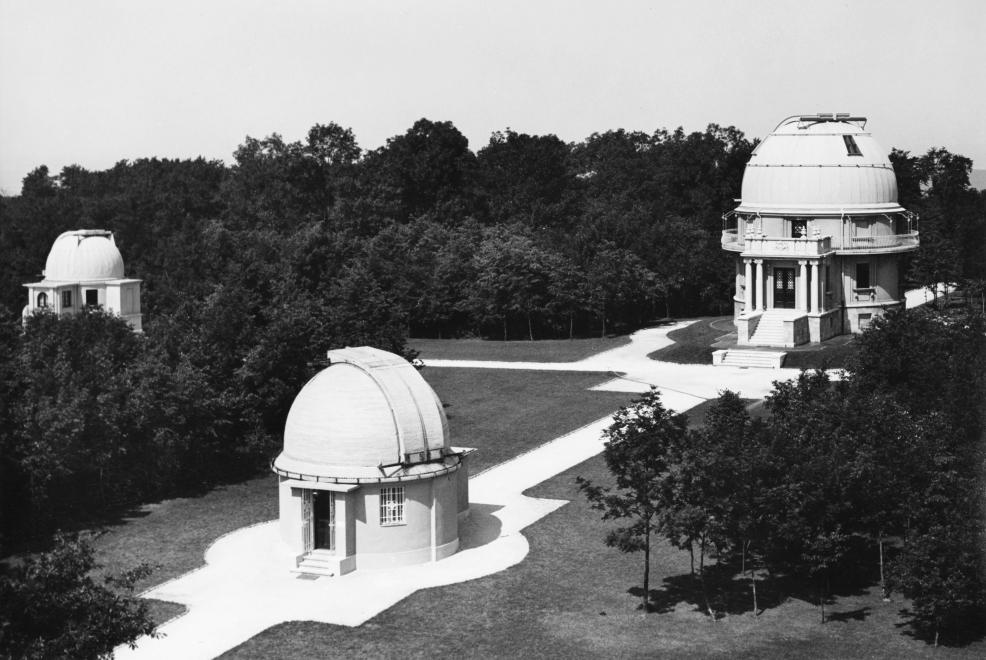
Fig. 6c. Domes of Konkoly Observatory Budapest (© Fortepan/Tibor Somlai)
Konkoly Observatory is well preserved.
Comparison with related/similar sites - InfoTheme: Astronomy from the Renaissance to the mid-twentieth century
Entity: 111
Subentity: 1
Version: 2
Status: PUB
Date: 2021-03-30 04:36:55
Author(s): Gudrun Wolfschmidt
Konkoly Observatory, founded in 1899, consists of several domes in an astronomy park. It has an emphasis on astrophysics, but no classical astronomy.
Threats or potential threats - InfoTheme: Astronomy from the Renaissance to the mid-twentieth century
Entity: 111
Subentity: 1
Version: 2
Status: PUB
Date: 2021-03-30 04:37:16
Author(s): Gudrun Wolfschmidt
no threats
Present use - InfoTheme: Astronomy from the Renaissance to the mid-twentieth century
Entity: 111
Subentity: 1
Version: 3
Status: PUB
Date: 2021-03-30 03:22:37
Author(s): Gudrun Wolfschmidt
Konkoly Observatory, together with the Heliophysical Observatory in Debrecen, forms the astrophysical institute of the Hungarian Academy of Sciences (HAS). The Observatory hosts the external Astrophysical Laboratory of the Eötvös Loránd University, cooperates with the University of Debrecen and University of Szeged, and coordinates the Hungarian Astronomical Infrastructure for Research (HAIR).
Astronomical relevance today - InfoTheme: Astronomy from the Renaissance to the mid-twentieth century
Entity: 111
Subentity: 1
Version: 5
Status: PUB
Date: 2021-04-18 18:35:34
Author(s): Gudrun Wolfschmidt
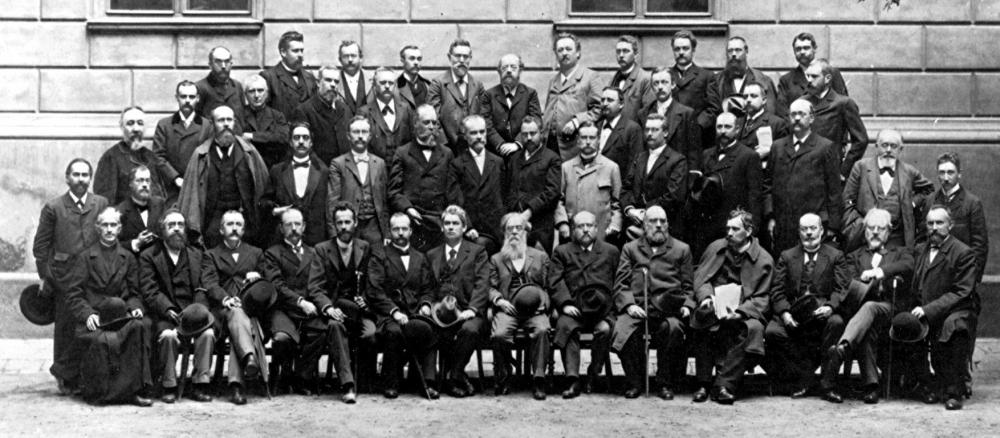
Fig. 6. Participants, AG Meeting in Budapest, Sept. 25, 1898
Konkoly Observatory is the Astronomical Institute of the Research Centre for Astronomy and Earth Sciences, which belongs to the Eötvös Loránd Research Network and belongs to the Hungarian Academy of Sciences.
Konkoly Observatory is an active astronomical observatory, especially in the research on Variable stars:
- Pulsating variables
- Spotted variables
- Eclipsing binaries
More research topics of Konkoly Observatory:
Interstellar matter, star formation, gamma-ray bursts,
Small bodies of the solar system, extrasolar planets,
History of astronomy.
References
Bibliography (books and published articles) - InfoTheme: Astronomy from the Renaissance to the mid-twentieth century
Entity: 111
Subentity: 1
Version: 8
Status: PUB
Date: 2021-10-19 20:36:24
Author(s): Gudrun Wolfschmidt
- Balázs, Lajos G.; Brosche, Peter; Duerbeck, Hilmar W. & Endre Zsoldos (ed.): The European Scientist: Symposium on the Era and Work of Franz Xaver von Zach (1754--1832). Frankfurt am Main: Verlag Harri Deutsch (Acta Historica Astronomiae Vol. 24) 2004.
- Balázs, Lajos G.: Astronomische Nachrichten AA 328 (2007), No 7 Short contributions, AG 2007 Würzburg.
- Balázs, Lajos G.: A short history of the Astronomical Research Institute of the Hungarian Academy of Sciences
(https://konkoly.hu/staff/balazs/100ev.html).
- Balázs, Lajos G.; Vargha, Magda & Endre Zsoldos: Rado Köveslighety’s spectroscopic work. In: Journal of Astronomical History and Heritage 11 (2008), p. 124-133.
- Brosche, Peter & Magda Vargha (ed.): Briefe Franz Xaver von Zachs in sein Vaterland. Budapest: Eötvös University 1984.
- Correspondence de Ferenc Weiss astronome hongrois du XVIIIe siecle, Tom. 1-2. Budapest: Bibl. de l’Univ., 1990--1992.
- Franz Xaver von Zach, 1754--1832. His life and times. Translated by József Csaba, Budapest: Konkoly Observatory, 2005.
- Kanyó, Sándor (ed.): "...csillagkoronák éjféli barátja." Tittel Pál élete és muködése. [The life and work of Paul Tittel]. Budapest: Akadémiai 1988.
- Konkoly, Nicolaus: Beobachtungen angestellt am Astrophysikalischen Observatorium in O’Gyalla in Ungarn. Band~1. Halle 1879, S.~1--11.
- Patkós, László (ed.): St. Gellert’s Hill Observatory’s chronicle: the correspondence of Johann Pasquich and of Paul Tittel. Budapest: Konkoly Observatory 1996.
- Vargha, Magda; Patkós, László; Tóth, Imre (ed.): The Role of Miklós Konkoly Thege in the History of Astronomy in Hungary. Proceedings of the International Meeting ’’120th Anniversary of Konkoly Observatory’’ in Budapest, 5.-6. Sept. 1991. Budapest: Konkoly Observatory 1992.
- Wolfschmidt, Gudrun: Astronomical Instruments of the Era Konkoly in Respect to their Significance to Astrophysics. In: Vargha, Magda; Patkós, László; Tóth, Imre (Hg.): The Role of Miklós Konkoly Thege in the History of Astronomy in Hungary. Proceedings of the International Meeting ’’120th Anniversary of Konkoly Observatory’’ in Budapest, 5.-6. Sept. 1991. Budapest: Konkoly Observatory of the Hungarian Academy (Konkoly Observatory of the Hungarian Academy of Science, Monographs No. 1) 1992, S. 69-82.
- Wolfschmidt, Gudrun: The Pioneering Astrophysical Work of Miklós Thege Konkoly (1842-1916). In: Sterken, Christiaan; Hearnshaw, John (Hg.): 100 Years of Observational Astronomy and Astrophysics. Homage to Miklós Konkoly Thege (1842--1916). [Proceedings of the Konkoly meeting in Tihany, Hungary, August 1999.] Brüssel: Vrije Universiteit 2001, S. 39-58.
- Wolfschmidt, Gudrun: Biographien: Nikolaus Konkoly-Thege (1842--1916). In: Hoffmann, Dieter; Laitko, Hubert und Staffan Müller-Wille (eds.): Lexikon der bedeutenden Naturwissenschaftler, Band 2 (F-Mei). Heidelberg, Berlin: Spektrum Akademischer Verlag, München: Elsevier 2004, S. 332-334.
- Wolfschmidt, Gudrun: Nikolaus von Konkoly (1842--1916) als Begründer des Konkoly Observatoriums Budapest. In: Wolfschmidt, Gudrun (Hg.): Astronomisches Mäzenatentum. Nuncius Hamburgensis, Beiträge zur Geschichte der Naturwissenschaften, Band 11. Norderstedt: Books on Demand 2008, S. 82-109.
- Wolfschmidt, Gudrun: Gothard and Konkoly -- national and international network of science. In: Conference on the 150th anniversary of Gothard’s birth, Gothard Observatory, Szombathely, Hungary, May 31 to June 2, 2007. Ed. by István Jankovics et al. Szombathely 2009.
Links to external sites - InfoTheme: Astronomy from the Renaissance to the mid-twentieth century
Entity: 111
Subentity: 1
Version: 6
Status: PUB
Date: 2021-04-23 11:57:02
Author(s): Gudrun Wolfschmidt
- THE FIRST CENTURY OF THE KONKOLY OBSERVATORY:
Magda Vargha and Zoltán Kolláth: Recount the history and achievements of the Konkoly Observatory, Budapest, founded 100 years ago. Astronomy and Geophysics Vol 41 (1999). - Balázs, Lajos G.: Theoretical astrophysics in the 19th century (Homage to Radó von Kövesligethy), 2004-01-01.
Links to external on-line pictures - InfoTheme: Astronomy from the Renaissance to the mid-twentieth century
Entity: 111
Subentity: 1
Version: 1
Status: PUB
Date: 2018-08-05 11:09:54
Author(s): Gudrun Wolfschmidt
no information available
PrintPrint contents of 'Description' tab
(opens in a new window) Theme
Astronomy from the Renaissance to the mid-twentieth century
Case Study Navigation
- InfoTheme: Astronomy from the Renaissance to the mid-twentieth century
Entity: 111
Subentity: 1
Version: 3
Status: PUB
Date: 2021-03-30 03:26:06
Author(s): Gudrun Wolfschmidt
Magyar Tudományos Akadémia, Csillagászati és Földtudományi Kutatóközpont,
Konkoly Thege Miklós Csillagászati Intézet,
Konkoly Thege Miklós út 15-17, H-1121 Budapest, Hungary
Location - InfoTheme: Astronomy from the Renaissance to the mid-twentieth century
Entity: 111
Subentity: 1
Version: 3
Status: PUB
Date: 2021-03-30 03:27:22
Author(s): Gudrun Wolfschmidt
Latitude 47°30’00’’ N, Longitude 18°57’54’’ E, Elevation 467m above mean sea level.
IAU observatory code - InfoTheme: Astronomy from the Renaissance to the mid-twentieth century
Entity: 111
Subentity: 1
Version: 1
Status: PUB
Date: 2018-08-05 11:09:54
Author(s): Gudrun Wolfschmidt
053
Description of (scientific/cultural/natural) heritage - InfoTheme: Astronomy from the Renaissance to the mid-twentieth century
Entity: 111
Subentity: 1
Version: 13
Status: PUB
Date: 2021-11-07 20:02:57
Author(s): Gudrun Wolfschmidt

Fig. 1a. Konkoly Observatory, Main Building (Balazs)
Miklós Konkoly-Thege / Nikolaus von Konkoly (1842--1916) studied Physics and Astronomy at the Universities of Budapest and Berlin. After graduation, in 1863, he went on a tour to visit the most prestigious observatories of Europa (Greenwich, Paris, Heidelberg and Göttingen). His next tour, seven years later, took him to visit not only astronomical observatories, but also the workshops of the most prominent instrument makers of his day (Sigmund Merz in Munich, John Browning in London and Thomas Cooke in York) (Vargha & Kolláth).

Fig. 1b. O’Gyalla Observatory (© Fortepan / Mór Erdélyi)
The O’Gyalla Observatory (now Hurbanovo in Slovakia) was founded in 1871 by the noble astronomer Konkoly as a private observatory in addition to his palace. He started his observations with a small 4-inch telescope and a meridian circle. He built a small dome for the 6-inch Merz refractor, used with a Zöllner spectroscope. In 1874, he built a 2.80-m-dome, enlarged in 1879, for his 10.5-inch Browning reflector (27cm) -- very remarkable for that time to acquire a reflector. In addition, he bought a Rheinfelder photoheliograph for photographing the Sun.
The main building was later given three additional domes. In 1881, the Browning reflector was replaced with a 10-inch Merz refractor.
Konkoly’s favorite topic was spectroscopy (comets and meteors), also photography, later photometry. Konkoly joined the international programme for stars brighter than 7.5mag by observing the zone between -15 degrees and 0 degrees. His catalogue with the results, based on Hermann Carl Vogel’s classification of the spectra, was published in 1887.

Fig. 2a. Miklós Konkoly-Thege / Nikolaus von Konkoly (1842--1916)
In the 1860s, a revolutionary transformation took place in astronomy, astrophysics was born. These new physical methods in astronomy -- spectroscopy/spectral analysis, photometry, astrophotography, and solar physics -- have stimulated the creation of a new branch of research, called astrophysics by Zöllner in 1865. Konkoly was one of the ten pioneers, who started astrophysics:
Karl Friedrich Zöllner (1829--1891), Hermann Carl Vogel (1841--1907), William Huggins (1824--1910), Joseph Norman Lockyer (1836--1920), Angelo Secchi (1818--1878), Pierre Jules César Janssen (1824--1907), Nikolaus Thege-Konkoly (1842--1916), and a little bit later William Henry Pickering (1858--1938), Julius Scheiner (1858--1913), Johannes Hartmann (1865--1936), and others. Konkoly had very close friendships with Vogel and Hartmann in Potsdam and with Max Wolf (1863--1932) in Heidelberg.

Fig. 2b. Miklós Konkoly-Thege, observing Halley’s comet with Johannes Franz Hartmann (1865--1936) of Potsdam in 1910, using a Zöllner Photometer
In 1890, Konkoly Thege was appointed director of the Meteorological Service. In addition, he organized a geomagnetic observatory in O’Gyalla, and made significant contributions.
In 1899, Konkoly Thege donated his private O’Gyalla observatory to the Hungarian State.
The Hungarian staff left when Chechoslovakia was formed in 1920. The council of Budapest allocated a property up in the hills just outside the city border for a new observatory. Everything was transferred to Budapest, Svábhegyi (Schwabenberg).
The first dome and the meridian house were ready in 1921, the main building in 1926. Finally, the large dome was ready by 1928. Since the order was made back in 1913 and advance was already paid, the Heyde firm in Dresden agreed to deliver the 60cm telescope for the original price, without adjusting it to inflation. The new Svábhegy Observatory was soon doing cutting-edge research.

Fig. 3a. Baron Béla Harkányi (1869--1932) (Wikipedia)

Fig. 3b. Antal Tass (1876--1937) (© Imre Visler)
Konkoly himself became the director, Radó Kövesligethy deputy director. Baron Béla Harkányi (1869--1932) was appointed as observer, Antal Tass (1876--1937) and Béla Szántó were assistant professors.
The research in Budapest had also like O’Gyalla the emphasis on photometry, especially the Ógyalla Catalogue of Variable Stars in two volumes (1916, 1935) was published.

Fig. 3. Radó von Kövesligethy (1862--1934) (Wikipedia)
Radó von Kövesligethy (1862--1934) studied in Vienna, made his habilitation in Budapest in 1889 (private lecturer), in 1897 he became an associate professor, in 1904 full professor for cosmography and geophysics.
He published 15 years before Max Planck (1858--1947), in 1885 in Hungarian and in 1890 in German, a first successful spectral equation of black body radiation (cf. Balázs 2004, 2007), derived with the following properties: the spectral distribution of radiation depends only on the temperature, the total irradiated energy is finite, and in addition, the wavelength of the intensity maximum is inversely proportional to the temperature -- eight years before Wilhelm Wien (1864--1928)!
History - InfoTheme: Astronomy from the Renaissance to the mid-twentieth century
Entity: 111
Subentity: 1
Version: 17
Status: PUB
Date: 2021-11-07 20:11:11
Author(s): Gudrun Wolfschmidt

Fig. 4a. Dome of 60-cm-Reflector of Konkoly Observatory

Fig. 4b. 60-cm-Reflector of Konkoly Observatory

Fig. 4c. Dome of the 60-cm-Reflector of Konkoly Observatory
Instruments of O’Gyalla and Konkoly Observatory
- 6-inch refractor, made by Merz of Munich, used with a Zöllner spectroscope
- 10.5-inch reflecting telescope, made by Browning of London
- two Zöllner photometers
- Wedge photometer, made by Töpfer of Potsdam
- Photoheliograph, made by Rheinfelder of Munich
- 7-inch refractor (18cm)
- 20-cm-refractor, made by Gustav Heyde of Dresden, with two smaller photographic cameras
- 60-cm-Reflector Cassegrain-Newton (24’’) with a guiding telescope of 30cm
- 16-cm-Astrograph (f=1:14) with a guiding telescope of 19cm

Fig. 5a. Dome of the 6-inch-Refractor of Konkoly Observatory

Fig. 5b. Dome of the 7-inch-Refractor of Konkoly Observatory

Fig. 5c. 20-cm-Refractor, Heyde of Dresden, in Konkoly Observatory
State of preservation - InfoTheme: Astronomy from the Renaissance to the mid-twentieth century
Entity: 111
Subentity: 1
Version: 3
Status: PUB
Date: 2021-11-07 20:12:50
Author(s): Gudrun Wolfschmidt

Fig. 6a. Main building, Konkoly Observatory Budapest (© Fortepan / Mór Erdélyi)

Fig. 6b. Large Dome for the 60-cm-Reflector, Konkoly Observatory Budapest (© Fortepan/Dr. Józsefné Nagy)

Fig. 6c. Domes of Konkoly Observatory Budapest (© Fortepan/Tibor Somlai)
Konkoly Observatory is well preserved.
Comparison with related/similar sites - InfoTheme: Astronomy from the Renaissance to the mid-twentieth century
Entity: 111
Subentity: 1
Version: 2
Status: PUB
Date: 2021-03-30 04:36:55
Author(s): Gudrun Wolfschmidt
Konkoly Observatory, founded in 1899, consists of several domes in an astronomy park. It has an emphasis on astrophysics, but no classical astronomy.
Threats or potential threats - InfoTheme: Astronomy from the Renaissance to the mid-twentieth century
Entity: 111
Subentity: 1
Version: 2
Status: PUB
Date: 2021-03-30 04:37:16
Author(s): Gudrun Wolfschmidt
no threats
Present use - InfoTheme: Astronomy from the Renaissance to the mid-twentieth century
Entity: 111
Subentity: 1
Version: 3
Status: PUB
Date: 2021-03-30 03:22:37
Author(s): Gudrun Wolfschmidt
Konkoly Observatory, together with the Heliophysical Observatory in Debrecen, forms the astrophysical institute of the Hungarian Academy of Sciences (HAS). The Observatory hosts the external Astrophysical Laboratory of the Eötvös Loránd University, cooperates with the University of Debrecen and University of Szeged, and coordinates the Hungarian Astronomical Infrastructure for Research (HAIR).
Astronomical relevance today - InfoTheme: Astronomy from the Renaissance to the mid-twentieth century
Entity: 111
Subentity: 1
Version: 5
Status: PUB
Date: 2021-04-18 18:35:34
Author(s): Gudrun Wolfschmidt

Fig. 6. Participants, AG Meeting in Budapest, Sept. 25, 1898
Konkoly Observatory is the Astronomical Institute of the Research Centre for Astronomy and Earth Sciences, which belongs to the Eötvös Loránd Research Network and belongs to the Hungarian Academy of Sciences.
Konkoly Observatory is an active astronomical observatory, especially in the research on Variable stars:
- Pulsating variables
- Spotted variables
- Eclipsing binaries
More research topics of Konkoly Observatory:
Interstellar matter, star formation, gamma-ray bursts,
Small bodies of the solar system, extrasolar planets,
History of astronomy.
References
Bibliography (books and published articles) - InfoTheme: Astronomy from the Renaissance to the mid-twentieth century
Entity: 111
Subentity: 1
Version: 8
Status: PUB
Date: 2021-10-19 20:36:24
Author(s): Gudrun Wolfschmidt
- Balázs, Lajos G.; Brosche, Peter; Duerbeck, Hilmar W. & Endre Zsoldos (ed.): The European Scientist: Symposium on the Era and Work of Franz Xaver von Zach (1754--1832). Frankfurt am Main: Verlag Harri Deutsch (Acta Historica Astronomiae Vol. 24) 2004.
- Balázs, Lajos G.: Astronomische Nachrichten AA 328 (2007), No 7 Short contributions, AG 2007 Würzburg.
- Balázs, Lajos G.: A short history of the Astronomical Research Institute of the Hungarian Academy of Sciences
(https://konkoly.hu/staff/balazs/100ev.html).
- Balázs, Lajos G.; Vargha, Magda & Endre Zsoldos: Rado Köveslighety’s spectroscopic work. In: Journal of Astronomical History and Heritage 11 (2008), p. 124-133.
- Brosche, Peter & Magda Vargha (ed.): Briefe Franz Xaver von Zachs in sein Vaterland. Budapest: Eötvös University 1984.
- Correspondence de Ferenc Weiss astronome hongrois du XVIIIe siecle, Tom. 1-2. Budapest: Bibl. de l’Univ., 1990--1992.
- Franz Xaver von Zach, 1754--1832. His life and times. Translated by József Csaba, Budapest: Konkoly Observatory, 2005.
- Kanyó, Sándor (ed.): "...csillagkoronák éjféli barátja." Tittel Pál élete és muködése. [The life and work of Paul Tittel]. Budapest: Akadémiai 1988.
- Konkoly, Nicolaus: Beobachtungen angestellt am Astrophysikalischen Observatorium in O’Gyalla in Ungarn. Band~1. Halle 1879, S.~1--11.
- Patkós, László (ed.): St. Gellert’s Hill Observatory’s chronicle: the correspondence of Johann Pasquich and of Paul Tittel. Budapest: Konkoly Observatory 1996.
- Vargha, Magda; Patkós, László; Tóth, Imre (ed.): The Role of Miklós Konkoly Thege in the History of Astronomy in Hungary. Proceedings of the International Meeting ’’120th Anniversary of Konkoly Observatory’’ in Budapest, 5.-6. Sept. 1991. Budapest: Konkoly Observatory 1992.
- Wolfschmidt, Gudrun: Astronomical Instruments of the Era Konkoly in Respect to their Significance to Astrophysics. In: Vargha, Magda; Patkós, László; Tóth, Imre (Hg.): The Role of Miklós Konkoly Thege in the History of Astronomy in Hungary. Proceedings of the International Meeting ’’120th Anniversary of Konkoly Observatory’’ in Budapest, 5.-6. Sept. 1991. Budapest: Konkoly Observatory of the Hungarian Academy (Konkoly Observatory of the Hungarian Academy of Science, Monographs No. 1) 1992, S. 69-82.
- Wolfschmidt, Gudrun: The Pioneering Astrophysical Work of Miklós Thege Konkoly (1842-1916). In: Sterken, Christiaan; Hearnshaw, John (Hg.): 100 Years of Observational Astronomy and Astrophysics. Homage to Miklós Konkoly Thege (1842--1916). [Proceedings of the Konkoly meeting in Tihany, Hungary, August 1999.] Brüssel: Vrije Universiteit 2001, S. 39-58.
- Wolfschmidt, Gudrun: Biographien: Nikolaus Konkoly-Thege (1842--1916). In: Hoffmann, Dieter; Laitko, Hubert und Staffan Müller-Wille (eds.): Lexikon der bedeutenden Naturwissenschaftler, Band 2 (F-Mei). Heidelberg, Berlin: Spektrum Akademischer Verlag, München: Elsevier 2004, S. 332-334.
- Wolfschmidt, Gudrun: Nikolaus von Konkoly (1842--1916) als Begründer des Konkoly Observatoriums Budapest. In: Wolfschmidt, Gudrun (Hg.): Astronomisches Mäzenatentum. Nuncius Hamburgensis, Beiträge zur Geschichte der Naturwissenschaften, Band 11. Norderstedt: Books on Demand 2008, S. 82-109.
- Wolfschmidt, Gudrun: Gothard and Konkoly -- national and international network of science. In: Conference on the 150th anniversary of Gothard’s birth, Gothard Observatory, Szombathely, Hungary, May 31 to June 2, 2007. Ed. by István Jankovics et al. Szombathely 2009.
Links to external sites - InfoTheme: Astronomy from the Renaissance to the mid-twentieth century
Entity: 111
Subentity: 1
Version: 6
Status: PUB
Date: 2021-04-23 11:57:02
Author(s): Gudrun Wolfschmidt
- THE FIRST CENTURY OF THE KONKOLY OBSERVATORY:
Magda Vargha and Zoltán Kolláth: Recount the history and achievements of the Konkoly Observatory, Budapest, founded 100 years ago. Astronomy and Geophysics Vol 41 (1999). - Balázs, Lajos G.: Theoretical astrophysics in the 19th century (Homage to Radó von Kövesligethy), 2004-01-01.
Links to external on-line pictures - InfoTheme: Astronomy from the Renaissance to the mid-twentieth century
Entity: 111
Subentity: 1
Version: 1
Status: PUB
Date: 2018-08-05 11:09:54
Author(s): Gudrun Wolfschmidt
no information available
PrintPrint contents of 'Description' tab
(opens in a new window) Theme
Astronomy from the Renaissance to the mid-twentieth century
Case Study Navigation
- InfoTheme: Astronomy from the Renaissance to the mid-twentieth century
Entity: 111
Subentity: 1
Version: 3
Status: PUB
Date: 2021-03-30 03:27:22
Author(s): Gudrun Wolfschmidt
Latitude 47°30’00’’ N, Longitude 18°57’54’’ E, Elevation 467m above mean sea level.
IAU observatory code - InfoTheme: Astronomy from the Renaissance to the mid-twentieth century
Entity: 111
Subentity: 1
Version: 1
Status: PUB
Date: 2018-08-05 11:09:54
Author(s): Gudrun Wolfschmidt
053
Description of (scientific/cultural/natural) heritage - InfoTheme: Astronomy from the Renaissance to the mid-twentieth century
Entity: 111
Subentity: 1
Version: 13
Status: PUB
Date: 2021-11-07 20:02:57
Author(s): Gudrun Wolfschmidt

Fig. 1a. Konkoly Observatory, Main Building (Balazs)
Miklós Konkoly-Thege / Nikolaus von Konkoly (1842--1916) studied Physics and Astronomy at the Universities of Budapest and Berlin. After graduation, in 1863, he went on a tour to visit the most prestigious observatories of Europa (Greenwich, Paris, Heidelberg and Göttingen). His next tour, seven years later, took him to visit not only astronomical observatories, but also the workshops of the most prominent instrument makers of his day (Sigmund Merz in Munich, John Browning in London and Thomas Cooke in York) (Vargha & Kolláth).

Fig. 1b. O’Gyalla Observatory (© Fortepan / Mór Erdélyi)
The O’Gyalla Observatory (now Hurbanovo in Slovakia) was founded in 1871 by the noble astronomer Konkoly as a private observatory in addition to his palace. He started his observations with a small 4-inch telescope and a meridian circle. He built a small dome for the 6-inch Merz refractor, used with a Zöllner spectroscope. In 1874, he built a 2.80-m-dome, enlarged in 1879, for his 10.5-inch Browning reflector (27cm) -- very remarkable for that time to acquire a reflector. In addition, he bought a Rheinfelder photoheliograph for photographing the Sun.
The main building was later given three additional domes. In 1881, the Browning reflector was replaced with a 10-inch Merz refractor.
Konkoly’s favorite topic was spectroscopy (comets and meteors), also photography, later photometry. Konkoly joined the international programme for stars brighter than 7.5mag by observing the zone between -15 degrees and 0 degrees. His catalogue with the results, based on Hermann Carl Vogel’s classification of the spectra, was published in 1887.

Fig. 2a. Miklós Konkoly-Thege / Nikolaus von Konkoly (1842--1916)
In the 1860s, a revolutionary transformation took place in astronomy, astrophysics was born. These new physical methods in astronomy -- spectroscopy/spectral analysis, photometry, astrophotography, and solar physics -- have stimulated the creation of a new branch of research, called astrophysics by Zöllner in 1865. Konkoly was one of the ten pioneers, who started astrophysics:
Karl Friedrich Zöllner (1829--1891), Hermann Carl Vogel (1841--1907), William Huggins (1824--1910), Joseph Norman Lockyer (1836--1920), Angelo Secchi (1818--1878), Pierre Jules César Janssen (1824--1907), Nikolaus Thege-Konkoly (1842--1916), and a little bit later William Henry Pickering (1858--1938), Julius Scheiner (1858--1913), Johannes Hartmann (1865--1936), and others. Konkoly had very close friendships with Vogel and Hartmann in Potsdam and with Max Wolf (1863--1932) in Heidelberg.

Fig. 2b. Miklós Konkoly-Thege, observing Halley’s comet with Johannes Franz Hartmann (1865--1936) of Potsdam in 1910, using a Zöllner Photometer
In 1890, Konkoly Thege was appointed director of the Meteorological Service. In addition, he organized a geomagnetic observatory in O’Gyalla, and made significant contributions.
In 1899, Konkoly Thege donated his private O’Gyalla observatory to the Hungarian State.
The Hungarian staff left when Chechoslovakia was formed in 1920. The council of Budapest allocated a property up in the hills just outside the city border for a new observatory. Everything was transferred to Budapest, Svábhegyi (Schwabenberg).
The first dome and the meridian house were ready in 1921, the main building in 1926. Finally, the large dome was ready by 1928. Since the order was made back in 1913 and advance was already paid, the Heyde firm in Dresden agreed to deliver the 60cm telescope for the original price, without adjusting it to inflation. The new Svábhegy Observatory was soon doing cutting-edge research.

Fig. 3a. Baron Béla Harkányi (1869--1932) (Wikipedia)

Fig. 3b. Antal Tass (1876--1937) (© Imre Visler)
Konkoly himself became the director, Radó Kövesligethy deputy director. Baron Béla Harkányi (1869--1932) was appointed as observer, Antal Tass (1876--1937) and Béla Szántó were assistant professors.
The research in Budapest had also like O’Gyalla the emphasis on photometry, especially the Ógyalla Catalogue of Variable Stars in two volumes (1916, 1935) was published.

Fig. 3. Radó von Kövesligethy (1862--1934) (Wikipedia)
Radó von Kövesligethy (1862--1934) studied in Vienna, made his habilitation in Budapest in 1889 (private lecturer), in 1897 he became an associate professor, in 1904 full professor for cosmography and geophysics.
He published 15 years before Max Planck (1858--1947), in 1885 in Hungarian and in 1890 in German, a first successful spectral equation of black body radiation (cf. Balázs 2004, 2007), derived with the following properties: the spectral distribution of radiation depends only on the temperature, the total irradiated energy is finite, and in addition, the wavelength of the intensity maximum is inversely proportional to the temperature -- eight years before Wilhelm Wien (1864--1928)!
History - InfoTheme: Astronomy from the Renaissance to the mid-twentieth century
Entity: 111
Subentity: 1
Version: 17
Status: PUB
Date: 2021-11-07 20:11:11
Author(s): Gudrun Wolfschmidt

Fig. 4a. Dome of 60-cm-Reflector of Konkoly Observatory

Fig. 4b. 60-cm-Reflector of Konkoly Observatory

Fig. 4c. Dome of the 60-cm-Reflector of Konkoly Observatory
Instruments of O’Gyalla and Konkoly Observatory
- 6-inch refractor, made by Merz of Munich, used with a Zöllner spectroscope
- 10.5-inch reflecting telescope, made by Browning of London
- two Zöllner photometers
- Wedge photometer, made by Töpfer of Potsdam
- Photoheliograph, made by Rheinfelder of Munich
- 7-inch refractor (18cm)
- 20-cm-refractor, made by Gustav Heyde of Dresden, with two smaller photographic cameras
- 60-cm-Reflector Cassegrain-Newton (24’’) with a guiding telescope of 30cm
- 16-cm-Astrograph (f=1:14) with a guiding telescope of 19cm

Fig. 5a. Dome of the 6-inch-Refractor of Konkoly Observatory

Fig. 5b. Dome of the 7-inch-Refractor of Konkoly Observatory

Fig. 5c. 20-cm-Refractor, Heyde of Dresden, in Konkoly Observatory
State of preservation - InfoTheme: Astronomy from the Renaissance to the mid-twentieth century
Entity: 111
Subentity: 1
Version: 3
Status: PUB
Date: 2021-11-07 20:12:50
Author(s): Gudrun Wolfschmidt

Fig. 6a. Main building, Konkoly Observatory Budapest (© Fortepan / Mór Erdélyi)

Fig. 6b. Large Dome for the 60-cm-Reflector, Konkoly Observatory Budapest (© Fortepan/Dr. Józsefné Nagy)

Fig. 6c. Domes of Konkoly Observatory Budapest (© Fortepan/Tibor Somlai)
Konkoly Observatory is well preserved.
Comparison with related/similar sites - InfoTheme: Astronomy from the Renaissance to the mid-twentieth century
Entity: 111
Subentity: 1
Version: 2
Status: PUB
Date: 2021-03-30 04:36:55
Author(s): Gudrun Wolfschmidt
Konkoly Observatory, founded in 1899, consists of several domes in an astronomy park. It has an emphasis on astrophysics, but no classical astronomy.
Threats or potential threats - InfoTheme: Astronomy from the Renaissance to the mid-twentieth century
Entity: 111
Subentity: 1
Version: 2
Status: PUB
Date: 2021-03-30 04:37:16
Author(s): Gudrun Wolfschmidt
no threats
Present use - InfoTheme: Astronomy from the Renaissance to the mid-twentieth century
Entity: 111
Subentity: 1
Version: 3
Status: PUB
Date: 2021-03-30 03:22:37
Author(s): Gudrun Wolfschmidt
Konkoly Observatory, together with the Heliophysical Observatory in Debrecen, forms the astrophysical institute of the Hungarian Academy of Sciences (HAS). The Observatory hosts the external Astrophysical Laboratory of the Eötvös Loránd University, cooperates with the University of Debrecen and University of Szeged, and coordinates the Hungarian Astronomical Infrastructure for Research (HAIR).
Astronomical relevance today - InfoTheme: Astronomy from the Renaissance to the mid-twentieth century
Entity: 111
Subentity: 1
Version: 5
Status: PUB
Date: 2021-04-18 18:35:34
Author(s): Gudrun Wolfschmidt

Fig. 6. Participants, AG Meeting in Budapest, Sept. 25, 1898
Konkoly Observatory is the Astronomical Institute of the Research Centre for Astronomy and Earth Sciences, which belongs to the Eötvös Loránd Research Network and belongs to the Hungarian Academy of Sciences.
Konkoly Observatory is an active astronomical observatory, especially in the research on Variable stars:
- Pulsating variables
- Spotted variables
- Eclipsing binaries
More research topics of Konkoly Observatory:
Interstellar matter, star formation, gamma-ray bursts,
Small bodies of the solar system, extrasolar planets,
History of astronomy.
References
Bibliography (books and published articles) - InfoTheme: Astronomy from the Renaissance to the mid-twentieth century
Entity: 111
Subentity: 1
Version: 8
Status: PUB
Date: 2021-10-19 20:36:24
Author(s): Gudrun Wolfschmidt
- Balázs, Lajos G.; Brosche, Peter; Duerbeck, Hilmar W. & Endre Zsoldos (ed.): The European Scientist: Symposium on the Era and Work of Franz Xaver von Zach (1754--1832). Frankfurt am Main: Verlag Harri Deutsch (Acta Historica Astronomiae Vol. 24) 2004.
- Balázs, Lajos G.: Astronomische Nachrichten AA 328 (2007), No 7 Short contributions, AG 2007 Würzburg.
- Balázs, Lajos G.: A short history of the Astronomical Research Institute of the Hungarian Academy of Sciences
(https://konkoly.hu/staff/balazs/100ev.html).
- Balázs, Lajos G.; Vargha, Magda & Endre Zsoldos: Rado Köveslighety’s spectroscopic work. In: Journal of Astronomical History and Heritage 11 (2008), p. 124-133.
- Brosche, Peter & Magda Vargha (ed.): Briefe Franz Xaver von Zachs in sein Vaterland. Budapest: Eötvös University 1984.
- Correspondence de Ferenc Weiss astronome hongrois du XVIIIe siecle, Tom. 1-2. Budapest: Bibl. de l’Univ., 1990--1992.
- Franz Xaver von Zach, 1754--1832. His life and times. Translated by József Csaba, Budapest: Konkoly Observatory, 2005.
- Kanyó, Sándor (ed.): "...csillagkoronák éjféli barátja." Tittel Pál élete és muködése. [The life and work of Paul Tittel]. Budapest: Akadémiai 1988.
- Konkoly, Nicolaus: Beobachtungen angestellt am Astrophysikalischen Observatorium in O’Gyalla in Ungarn. Band~1. Halle 1879, S.~1--11.
- Patkós, László (ed.): St. Gellert’s Hill Observatory’s chronicle: the correspondence of Johann Pasquich and of Paul Tittel. Budapest: Konkoly Observatory 1996.
- Vargha, Magda; Patkós, László; Tóth, Imre (ed.): The Role of Miklós Konkoly Thege in the History of Astronomy in Hungary. Proceedings of the International Meeting ’’120th Anniversary of Konkoly Observatory’’ in Budapest, 5.-6. Sept. 1991. Budapest: Konkoly Observatory 1992.
- Wolfschmidt, Gudrun: Astronomical Instruments of the Era Konkoly in Respect to their Significance to Astrophysics. In: Vargha, Magda; Patkós, László; Tóth, Imre (Hg.): The Role of Miklós Konkoly Thege in the History of Astronomy in Hungary. Proceedings of the International Meeting ’’120th Anniversary of Konkoly Observatory’’ in Budapest, 5.-6. Sept. 1991. Budapest: Konkoly Observatory of the Hungarian Academy (Konkoly Observatory of the Hungarian Academy of Science, Monographs No. 1) 1992, S. 69-82.
- Wolfschmidt, Gudrun: The Pioneering Astrophysical Work of Miklós Thege Konkoly (1842-1916). In: Sterken, Christiaan; Hearnshaw, John (Hg.): 100 Years of Observational Astronomy and Astrophysics. Homage to Miklós Konkoly Thege (1842--1916). [Proceedings of the Konkoly meeting in Tihany, Hungary, August 1999.] Brüssel: Vrije Universiteit 2001, S. 39-58.
- Wolfschmidt, Gudrun: Biographien: Nikolaus Konkoly-Thege (1842--1916). In: Hoffmann, Dieter; Laitko, Hubert und Staffan Müller-Wille (eds.): Lexikon der bedeutenden Naturwissenschaftler, Band 2 (F-Mei). Heidelberg, Berlin: Spektrum Akademischer Verlag, München: Elsevier 2004, S. 332-334.
- Wolfschmidt, Gudrun: Nikolaus von Konkoly (1842--1916) als Begründer des Konkoly Observatoriums Budapest. In: Wolfschmidt, Gudrun (Hg.): Astronomisches Mäzenatentum. Nuncius Hamburgensis, Beiträge zur Geschichte der Naturwissenschaften, Band 11. Norderstedt: Books on Demand 2008, S. 82-109.
- Wolfschmidt, Gudrun: Gothard and Konkoly -- national and international network of science. In: Conference on the 150th anniversary of Gothard’s birth, Gothard Observatory, Szombathely, Hungary, May 31 to June 2, 2007. Ed. by István Jankovics et al. Szombathely 2009.
Links to external sites - InfoTheme: Astronomy from the Renaissance to the mid-twentieth century
Entity: 111
Subentity: 1
Version: 6
Status: PUB
Date: 2021-04-23 11:57:02
Author(s): Gudrun Wolfschmidt
- THE FIRST CENTURY OF THE KONKOLY OBSERVATORY:
Magda Vargha and Zoltán Kolláth: Recount the history and achievements of the Konkoly Observatory, Budapest, founded 100 years ago. Astronomy and Geophysics Vol 41 (1999). - Balázs, Lajos G.: Theoretical astrophysics in the 19th century (Homage to Radó von Kövesligethy), 2004-01-01.
Links to external on-line pictures - InfoTheme: Astronomy from the Renaissance to the mid-twentieth century
Entity: 111
Subentity: 1
Version: 1
Status: PUB
Date: 2018-08-05 11:09:54
Author(s): Gudrun Wolfschmidt
no information available
PrintPrint contents of 'Description' tab
(opens in a new window) Theme
Astronomy from the Renaissance to the mid-twentieth century
Case Study Navigation
- InfoTheme: Astronomy from the Renaissance to the mid-twentieth century
Entity: 111
Subentity: 1
Version: 1
Status: PUB
Date: 2018-08-05 11:09:54
Author(s): Gudrun Wolfschmidt
053
Description of (scientific/cultural/natural) heritage - InfoTheme: Astronomy from the Renaissance to the mid-twentieth century
Entity: 111
Subentity: 1
Version: 13
Status: PUB
Date: 2021-11-07 20:02:57
Author(s): Gudrun Wolfschmidt

Fig. 1a. Konkoly Observatory, Main Building (Balazs)
Miklós Konkoly-Thege / Nikolaus von Konkoly (1842--1916) studied Physics and Astronomy at the Universities of Budapest and Berlin. After graduation, in 1863, he went on a tour to visit the most prestigious observatories of Europa (Greenwich, Paris, Heidelberg and Göttingen). His next tour, seven years later, took him to visit not only astronomical observatories, but also the workshops of the most prominent instrument makers of his day (Sigmund Merz in Munich, John Browning in London and Thomas Cooke in York) (Vargha & Kolláth).

Fig. 1b. O’Gyalla Observatory (© Fortepan / Mór Erdélyi)
The O’Gyalla Observatory (now Hurbanovo in Slovakia) was founded in 1871 by the noble astronomer Konkoly as a private observatory in addition to his palace. He started his observations with a small 4-inch telescope and a meridian circle. He built a small dome for the 6-inch Merz refractor, used with a Zöllner spectroscope. In 1874, he built a 2.80-m-dome, enlarged in 1879, for his 10.5-inch Browning reflector (27cm) -- very remarkable for that time to acquire a reflector. In addition, he bought a Rheinfelder photoheliograph for photographing the Sun.
The main building was later given three additional domes. In 1881, the Browning reflector was replaced with a 10-inch Merz refractor.
Konkoly’s favorite topic was spectroscopy (comets and meteors), also photography, later photometry. Konkoly joined the international programme for stars brighter than 7.5mag by observing the zone between -15 degrees and 0 degrees. His catalogue with the results, based on Hermann Carl Vogel’s classification of the spectra, was published in 1887.

Fig. 2a. Miklós Konkoly-Thege / Nikolaus von Konkoly (1842--1916)
In the 1860s, a revolutionary transformation took place in astronomy, astrophysics was born. These new physical methods in astronomy -- spectroscopy/spectral analysis, photometry, astrophotography, and solar physics -- have stimulated the creation of a new branch of research, called astrophysics by Zöllner in 1865. Konkoly was one of the ten pioneers, who started astrophysics:
Karl Friedrich Zöllner (1829--1891), Hermann Carl Vogel (1841--1907), William Huggins (1824--1910), Joseph Norman Lockyer (1836--1920), Angelo Secchi (1818--1878), Pierre Jules César Janssen (1824--1907), Nikolaus Thege-Konkoly (1842--1916), and a little bit later William Henry Pickering (1858--1938), Julius Scheiner (1858--1913), Johannes Hartmann (1865--1936), and others. Konkoly had very close friendships with Vogel and Hartmann in Potsdam and with Max Wolf (1863--1932) in Heidelberg.

Fig. 2b. Miklós Konkoly-Thege, observing Halley’s comet with Johannes Franz Hartmann (1865--1936) of Potsdam in 1910, using a Zöllner Photometer
In 1890, Konkoly Thege was appointed director of the Meteorological Service. In addition, he organized a geomagnetic observatory in O’Gyalla, and made significant contributions.
In 1899, Konkoly Thege donated his private O’Gyalla observatory to the Hungarian State.
The Hungarian staff left when Chechoslovakia was formed in 1920. The council of Budapest allocated a property up in the hills just outside the city border for a new observatory. Everything was transferred to Budapest, Svábhegyi (Schwabenberg).
The first dome and the meridian house were ready in 1921, the main building in 1926. Finally, the large dome was ready by 1928. Since the order was made back in 1913 and advance was already paid, the Heyde firm in Dresden agreed to deliver the 60cm telescope for the original price, without adjusting it to inflation. The new Svábhegy Observatory was soon doing cutting-edge research.

Fig. 3a. Baron Béla Harkányi (1869--1932) (Wikipedia)

Fig. 3b. Antal Tass (1876--1937) (© Imre Visler)
Konkoly himself became the director, Radó Kövesligethy deputy director. Baron Béla Harkányi (1869--1932) was appointed as observer, Antal Tass (1876--1937) and Béla Szántó were assistant professors.
The research in Budapest had also like O’Gyalla the emphasis on photometry, especially the Ógyalla Catalogue of Variable Stars in two volumes (1916, 1935) was published.

Fig. 3. Radó von Kövesligethy (1862--1934) (Wikipedia)
Radó von Kövesligethy (1862--1934) studied in Vienna, made his habilitation in Budapest in 1889 (private lecturer), in 1897 he became an associate professor, in 1904 full professor for cosmography and geophysics.
He published 15 years before Max Planck (1858--1947), in 1885 in Hungarian and in 1890 in German, a first successful spectral equation of black body radiation (cf. Balázs 2004, 2007), derived with the following properties: the spectral distribution of radiation depends only on the temperature, the total irradiated energy is finite, and in addition, the wavelength of the intensity maximum is inversely proportional to the temperature -- eight years before Wilhelm Wien (1864--1928)!
History - InfoTheme: Astronomy from the Renaissance to the mid-twentieth century
Entity: 111
Subentity: 1
Version: 17
Status: PUB
Date: 2021-11-07 20:11:11
Author(s): Gudrun Wolfschmidt

Fig. 4a. Dome of 60-cm-Reflector of Konkoly Observatory

Fig. 4b. 60-cm-Reflector of Konkoly Observatory

Fig. 4c. Dome of the 60-cm-Reflector of Konkoly Observatory
Instruments of O’Gyalla and Konkoly Observatory
- 6-inch refractor, made by Merz of Munich, used with a Zöllner spectroscope
- 10.5-inch reflecting telescope, made by Browning of London
- two Zöllner photometers
- Wedge photometer, made by Töpfer of Potsdam
- Photoheliograph, made by Rheinfelder of Munich
- 7-inch refractor (18cm)
- 20-cm-refractor, made by Gustav Heyde of Dresden, with two smaller photographic cameras
- 60-cm-Reflector Cassegrain-Newton (24’’) with a guiding telescope of 30cm
- 16-cm-Astrograph (f=1:14) with a guiding telescope of 19cm

Fig. 5a. Dome of the 6-inch-Refractor of Konkoly Observatory

Fig. 5b. Dome of the 7-inch-Refractor of Konkoly Observatory

Fig. 5c. 20-cm-Refractor, Heyde of Dresden, in Konkoly Observatory
State of preservation - InfoTheme: Astronomy from the Renaissance to the mid-twentieth century
Entity: 111
Subentity: 1
Version: 3
Status: PUB
Date: 2021-11-07 20:12:50
Author(s): Gudrun Wolfschmidt

Fig. 6a. Main building, Konkoly Observatory Budapest (© Fortepan / Mór Erdélyi)

Fig. 6b. Large Dome for the 60-cm-Reflector, Konkoly Observatory Budapest (© Fortepan/Dr. Józsefné Nagy)

Fig. 6c. Domes of Konkoly Observatory Budapest (© Fortepan/Tibor Somlai)
Konkoly Observatory is well preserved.
Comparison with related/similar sites - InfoTheme: Astronomy from the Renaissance to the mid-twentieth century
Entity: 111
Subentity: 1
Version: 2
Status: PUB
Date: 2021-03-30 04:36:55
Author(s): Gudrun Wolfschmidt
Konkoly Observatory, founded in 1899, consists of several domes in an astronomy park. It has an emphasis on astrophysics, but no classical astronomy.
Threats or potential threats - InfoTheme: Astronomy from the Renaissance to the mid-twentieth century
Entity: 111
Subentity: 1
Version: 2
Status: PUB
Date: 2021-03-30 04:37:16
Author(s): Gudrun Wolfschmidt
no threats
Present use - InfoTheme: Astronomy from the Renaissance to the mid-twentieth century
Entity: 111
Subentity: 1
Version: 3
Status: PUB
Date: 2021-03-30 03:22:37
Author(s): Gudrun Wolfschmidt
Konkoly Observatory, together with the Heliophysical Observatory in Debrecen, forms the astrophysical institute of the Hungarian Academy of Sciences (HAS). The Observatory hosts the external Astrophysical Laboratory of the Eötvös Loránd University, cooperates with the University of Debrecen and University of Szeged, and coordinates the Hungarian Astronomical Infrastructure for Research (HAIR).
Astronomical relevance today - InfoTheme: Astronomy from the Renaissance to the mid-twentieth century
Entity: 111
Subentity: 1
Version: 5
Status: PUB
Date: 2021-04-18 18:35:34
Author(s): Gudrun Wolfschmidt

Fig. 6. Participants, AG Meeting in Budapest, Sept. 25, 1898
Konkoly Observatory is the Astronomical Institute of the Research Centre for Astronomy and Earth Sciences, which belongs to the Eötvös Loránd Research Network and belongs to the Hungarian Academy of Sciences.
Konkoly Observatory is an active astronomical observatory, especially in the research on Variable stars:
- Pulsating variables
- Spotted variables
- Eclipsing binaries
More research topics of Konkoly Observatory:
Interstellar matter, star formation, gamma-ray bursts,
Small bodies of the solar system, extrasolar planets,
History of astronomy.
References
Bibliography (books and published articles) - InfoTheme: Astronomy from the Renaissance to the mid-twentieth century
Entity: 111
Subentity: 1
Version: 8
Status: PUB
Date: 2021-10-19 20:36:24
Author(s): Gudrun Wolfschmidt
- Balázs, Lajos G.; Brosche, Peter; Duerbeck, Hilmar W. & Endre Zsoldos (ed.): The European Scientist: Symposium on the Era and Work of Franz Xaver von Zach (1754--1832). Frankfurt am Main: Verlag Harri Deutsch (Acta Historica Astronomiae Vol. 24) 2004.
- Balázs, Lajos G.: Astronomische Nachrichten AA 328 (2007), No 7 Short contributions, AG 2007 Würzburg.
- Balázs, Lajos G.: A short history of the Astronomical Research Institute of the Hungarian Academy of Sciences
(https://konkoly.hu/staff/balazs/100ev.html).
- Balázs, Lajos G.; Vargha, Magda & Endre Zsoldos: Rado Köveslighety’s spectroscopic work. In: Journal of Astronomical History and Heritage 11 (2008), p. 124-133.
- Brosche, Peter & Magda Vargha (ed.): Briefe Franz Xaver von Zachs in sein Vaterland. Budapest: Eötvös University 1984.
- Correspondence de Ferenc Weiss astronome hongrois du XVIIIe siecle, Tom. 1-2. Budapest: Bibl. de l’Univ., 1990--1992.
- Franz Xaver von Zach, 1754--1832. His life and times. Translated by József Csaba, Budapest: Konkoly Observatory, 2005.
- Kanyó, Sándor (ed.): "...csillagkoronák éjféli barátja." Tittel Pál élete és muködése. [The life and work of Paul Tittel]. Budapest: Akadémiai 1988.
- Konkoly, Nicolaus: Beobachtungen angestellt am Astrophysikalischen Observatorium in O’Gyalla in Ungarn. Band~1. Halle 1879, S.~1--11.
- Patkós, László (ed.): St. Gellert’s Hill Observatory’s chronicle: the correspondence of Johann Pasquich and of Paul Tittel. Budapest: Konkoly Observatory 1996.
- Vargha, Magda; Patkós, László; Tóth, Imre (ed.): The Role of Miklós Konkoly Thege in the History of Astronomy in Hungary. Proceedings of the International Meeting ’’120th Anniversary of Konkoly Observatory’’ in Budapest, 5.-6. Sept. 1991. Budapest: Konkoly Observatory 1992.
- Wolfschmidt, Gudrun: Astronomical Instruments of the Era Konkoly in Respect to their Significance to Astrophysics. In: Vargha, Magda; Patkós, László; Tóth, Imre (Hg.): The Role of Miklós Konkoly Thege in the History of Astronomy in Hungary. Proceedings of the International Meeting ’’120th Anniversary of Konkoly Observatory’’ in Budapest, 5.-6. Sept. 1991. Budapest: Konkoly Observatory of the Hungarian Academy (Konkoly Observatory of the Hungarian Academy of Science, Monographs No. 1) 1992, S. 69-82.
- Wolfschmidt, Gudrun: The Pioneering Astrophysical Work of Miklós Thege Konkoly (1842-1916). In: Sterken, Christiaan; Hearnshaw, John (Hg.): 100 Years of Observational Astronomy and Astrophysics. Homage to Miklós Konkoly Thege (1842--1916). [Proceedings of the Konkoly meeting in Tihany, Hungary, August 1999.] Brüssel: Vrije Universiteit 2001, S. 39-58.
- Wolfschmidt, Gudrun: Biographien: Nikolaus Konkoly-Thege (1842--1916). In: Hoffmann, Dieter; Laitko, Hubert und Staffan Müller-Wille (eds.): Lexikon der bedeutenden Naturwissenschaftler, Band 2 (F-Mei). Heidelberg, Berlin: Spektrum Akademischer Verlag, München: Elsevier 2004, S. 332-334.
- Wolfschmidt, Gudrun: Nikolaus von Konkoly (1842--1916) als Begründer des Konkoly Observatoriums Budapest. In: Wolfschmidt, Gudrun (Hg.): Astronomisches Mäzenatentum. Nuncius Hamburgensis, Beiträge zur Geschichte der Naturwissenschaften, Band 11. Norderstedt: Books on Demand 2008, S. 82-109.
- Wolfschmidt, Gudrun: Gothard and Konkoly -- national and international network of science. In: Conference on the 150th anniversary of Gothard’s birth, Gothard Observatory, Szombathely, Hungary, May 31 to June 2, 2007. Ed. by István Jankovics et al. Szombathely 2009.
Links to external sites - InfoTheme: Astronomy from the Renaissance to the mid-twentieth century
Entity: 111
Subentity: 1
Version: 6
Status: PUB
Date: 2021-04-23 11:57:02
Author(s): Gudrun Wolfschmidt
- THE FIRST CENTURY OF THE KONKOLY OBSERVATORY:
Magda Vargha and Zoltán Kolláth: Recount the history and achievements of the Konkoly Observatory, Budapest, founded 100 years ago. Astronomy and Geophysics Vol 41 (1999). - Balázs, Lajos G.: Theoretical astrophysics in the 19th century (Homage to Radó von Kövesligethy), 2004-01-01.
Links to external on-line pictures - InfoTheme: Astronomy from the Renaissance to the mid-twentieth century
Entity: 111
Subentity: 1
Version: 1
Status: PUB
Date: 2018-08-05 11:09:54
Author(s): Gudrun Wolfschmidt
no information available
PrintPrint contents of 'Description' tab
(opens in a new window) Theme
Astronomy from the Renaissance to the mid-twentieth century
Case Study Navigation
- InfoTheme: Astronomy from the Renaissance to the mid-twentieth century
Entity: 111
Subentity: 1
Version: 13
Status: PUB
Date: 2021-11-07 20:02:57
Author(s): Gudrun Wolfschmidt

Fig. 1a. Konkoly Observatory, Main Building (Balazs)
Miklós Konkoly-Thege / Nikolaus von Konkoly (1842--1916) studied Physics and Astronomy at the Universities of Budapest and Berlin. After graduation, in 1863, he went on a tour to visit the most prestigious observatories of Europa (Greenwich, Paris, Heidelberg and Göttingen). His next tour, seven years later, took him to visit not only astronomical observatories, but also the workshops of the most prominent instrument makers of his day (Sigmund Merz in Munich, John Browning in London and Thomas Cooke in York) (Vargha & Kolláth).

Fig. 1b. O’Gyalla Observatory (© Fortepan / Mór Erdélyi)
The O’Gyalla Observatory (now Hurbanovo in Slovakia) was founded in 1871 by the noble astronomer Konkoly as a private observatory in addition to his palace. He started his observations with a small 4-inch telescope and a meridian circle. He built a small dome for the 6-inch Merz refractor, used with a Zöllner spectroscope. In 1874, he built a 2.80-m-dome, enlarged in 1879, for his 10.5-inch Browning reflector (27cm) -- very remarkable for that time to acquire a reflector. In addition, he bought a Rheinfelder photoheliograph for photographing the Sun.
The main building was later given three additional domes. In 1881, the Browning reflector was replaced with a 10-inch Merz refractor.
Konkoly’s favorite topic was spectroscopy (comets and meteors), also photography, later photometry. Konkoly joined the international programme for stars brighter than 7.5mag by observing the zone between -15 degrees and 0 degrees. His catalogue with the results, based on Hermann Carl Vogel’s classification of the spectra, was published in 1887.

Fig. 2a. Miklós Konkoly-Thege / Nikolaus von Konkoly (1842--1916)
In the 1860s, a revolutionary transformation took place in astronomy, astrophysics was born. These new physical methods in astronomy -- spectroscopy/spectral analysis, photometry, astrophotography, and solar physics -- have stimulated the creation of a new branch of research, called astrophysics by Zöllner in 1865. Konkoly was one of the ten pioneers, who started astrophysics:
Karl Friedrich Zöllner (1829--1891), Hermann Carl Vogel (1841--1907), William Huggins (1824--1910), Joseph Norman Lockyer (1836--1920), Angelo Secchi (1818--1878), Pierre Jules César Janssen (1824--1907), Nikolaus Thege-Konkoly (1842--1916), and a little bit later William Henry Pickering (1858--1938), Julius Scheiner (1858--1913), Johannes Hartmann (1865--1936), and others. Konkoly had very close friendships with Vogel and Hartmann in Potsdam and with Max Wolf (1863--1932) in Heidelberg.

Fig. 2b. Miklós Konkoly-Thege, observing Halley’s comet with Johannes Franz Hartmann (1865--1936) of Potsdam in 1910, using a Zöllner Photometer
In 1890, Konkoly Thege was appointed director of the Meteorological Service. In addition, he organized a geomagnetic observatory in O’Gyalla, and made significant contributions.
In 1899, Konkoly Thege donated his private O’Gyalla observatory to the Hungarian State.
The Hungarian staff left when Chechoslovakia was formed in 1920. The council of Budapest allocated a property up in the hills just outside the city border for a new observatory. Everything was transferred to Budapest, Svábhegyi (Schwabenberg).
The first dome and the meridian house were ready in 1921, the main building in 1926. Finally, the large dome was ready by 1928. Since the order was made back in 1913 and advance was already paid, the Heyde firm in Dresden agreed to deliver the 60cm telescope for the original price, without adjusting it to inflation. The new Svábhegy Observatory was soon doing cutting-edge research.

Fig. 3a. Baron Béla Harkányi (1869--1932) (Wikipedia)

Fig. 3b. Antal Tass (1876--1937) (© Imre Visler)
Konkoly himself became the director, Radó Kövesligethy deputy director. Baron Béla Harkányi (1869--1932) was appointed as observer, Antal Tass (1876--1937) and Béla Szántó were assistant professors.
The research in Budapest had also like O’Gyalla the emphasis on photometry, especially the Ógyalla Catalogue of Variable Stars in two volumes (1916, 1935) was published.

Fig. 3. Radó von Kövesligethy (1862--1934) (Wikipedia)
Radó von Kövesligethy (1862--1934) studied in Vienna, made his habilitation in Budapest in 1889 (private lecturer), in 1897 he became an associate professor, in 1904 full professor for cosmography and geophysics.
He published 15 years before Max Planck (1858--1947), in 1885 in Hungarian and in 1890 in German, a first successful spectral equation of black body radiation (cf. Balázs 2004, 2007), derived with the following properties: the spectral distribution of radiation depends only on the temperature, the total irradiated energy is finite, and in addition, the wavelength of the intensity maximum is inversely proportional to the temperature -- eight years before Wilhelm Wien (1864--1928)!
History - InfoTheme: Astronomy from the Renaissance to the mid-twentieth century
Entity: 111
Subentity: 1
Version: 17
Status: PUB
Date: 2021-11-07 20:11:11
Author(s): Gudrun Wolfschmidt

Fig. 4a. Dome of 60-cm-Reflector of Konkoly Observatory

Fig. 4b. 60-cm-Reflector of Konkoly Observatory

Fig. 4c. Dome of the 60-cm-Reflector of Konkoly Observatory
Instruments of O’Gyalla and Konkoly Observatory
- 6-inch refractor, made by Merz of Munich, used with a Zöllner spectroscope
- 10.5-inch reflecting telescope, made by Browning of London
- two Zöllner photometers
- Wedge photometer, made by Töpfer of Potsdam
- Photoheliograph, made by Rheinfelder of Munich
- 7-inch refractor (18cm)
- 20-cm-refractor, made by Gustav Heyde of Dresden, with two smaller photographic cameras
- 60-cm-Reflector Cassegrain-Newton (24’’) with a guiding telescope of 30cm
- 16-cm-Astrograph (f=1:14) with a guiding telescope of 19cm

Fig. 5a. Dome of the 6-inch-Refractor of Konkoly Observatory

Fig. 5b. Dome of the 7-inch-Refractor of Konkoly Observatory

Fig. 5c. 20-cm-Refractor, Heyde of Dresden, in Konkoly Observatory
State of preservation - InfoTheme: Astronomy from the Renaissance to the mid-twentieth century
Entity: 111
Subentity: 1
Version: 3
Status: PUB
Date: 2021-11-07 20:12:50
Author(s): Gudrun Wolfschmidt

Fig. 6a. Main building, Konkoly Observatory Budapest (© Fortepan / Mór Erdélyi)

Fig. 6b. Large Dome for the 60-cm-Reflector, Konkoly Observatory Budapest (© Fortepan/Dr. Józsefné Nagy)

Fig. 6c. Domes of Konkoly Observatory Budapest (© Fortepan/Tibor Somlai)
Konkoly Observatory is well preserved.
Comparison with related/similar sites - InfoTheme: Astronomy from the Renaissance to the mid-twentieth century
Entity: 111
Subentity: 1
Version: 2
Status: PUB
Date: 2021-03-30 04:36:55
Author(s): Gudrun Wolfschmidt
Konkoly Observatory, founded in 1899, consists of several domes in an astronomy park. It has an emphasis on astrophysics, but no classical astronomy.
Threats or potential threats - InfoTheme: Astronomy from the Renaissance to the mid-twentieth century
Entity: 111
Subentity: 1
Version: 2
Status: PUB
Date: 2021-03-30 04:37:16
Author(s): Gudrun Wolfschmidt
no threats
Present use - InfoTheme: Astronomy from the Renaissance to the mid-twentieth century
Entity: 111
Subentity: 1
Version: 3
Status: PUB
Date: 2021-03-30 03:22:37
Author(s): Gudrun Wolfschmidt
Konkoly Observatory, together with the Heliophysical Observatory in Debrecen, forms the astrophysical institute of the Hungarian Academy of Sciences (HAS). The Observatory hosts the external Astrophysical Laboratory of the Eötvös Loránd University, cooperates with the University of Debrecen and University of Szeged, and coordinates the Hungarian Astronomical Infrastructure for Research (HAIR).
Astronomical relevance today - InfoTheme: Astronomy from the Renaissance to the mid-twentieth century
Entity: 111
Subentity: 1
Version: 5
Status: PUB
Date: 2021-04-18 18:35:34
Author(s): Gudrun Wolfschmidt

Fig. 6. Participants, AG Meeting in Budapest, Sept. 25, 1898
Konkoly Observatory is the Astronomical Institute of the Research Centre for Astronomy and Earth Sciences, which belongs to the Eötvös Loránd Research Network and belongs to the Hungarian Academy of Sciences.
Konkoly Observatory is an active astronomical observatory, especially in the research on Variable stars:
- Pulsating variables
- Spotted variables
- Eclipsing binaries
More research topics of Konkoly Observatory:
Interstellar matter, star formation, gamma-ray bursts,
Small bodies of the solar system, extrasolar planets,
History of astronomy.
References
Bibliography (books and published articles) - InfoTheme: Astronomy from the Renaissance to the mid-twentieth century
Entity: 111
Subentity: 1
Version: 8
Status: PUB
Date: 2021-10-19 20:36:24
Author(s): Gudrun Wolfschmidt
- Balázs, Lajos G.; Brosche, Peter; Duerbeck, Hilmar W. & Endre Zsoldos (ed.): The European Scientist: Symposium on the Era and Work of Franz Xaver von Zach (1754--1832). Frankfurt am Main: Verlag Harri Deutsch (Acta Historica Astronomiae Vol. 24) 2004.
- Balázs, Lajos G.: Astronomische Nachrichten AA 328 (2007), No 7 Short contributions, AG 2007 Würzburg.
- Balázs, Lajos G.: A short history of the Astronomical Research Institute of the Hungarian Academy of Sciences
(https://konkoly.hu/staff/balazs/100ev.html).
- Balázs, Lajos G.; Vargha, Magda & Endre Zsoldos: Rado Köveslighety’s spectroscopic work. In: Journal of Astronomical History and Heritage 11 (2008), p. 124-133.
- Brosche, Peter & Magda Vargha (ed.): Briefe Franz Xaver von Zachs in sein Vaterland. Budapest: Eötvös University 1984.
- Correspondence de Ferenc Weiss astronome hongrois du XVIIIe siecle, Tom. 1-2. Budapest: Bibl. de l’Univ., 1990--1992.
- Franz Xaver von Zach, 1754--1832. His life and times. Translated by József Csaba, Budapest: Konkoly Observatory, 2005.
- Kanyó, Sándor (ed.): "...csillagkoronák éjféli barátja." Tittel Pál élete és muködése. [The life and work of Paul Tittel]. Budapest: Akadémiai 1988.
- Konkoly, Nicolaus: Beobachtungen angestellt am Astrophysikalischen Observatorium in O’Gyalla in Ungarn. Band~1. Halle 1879, S.~1--11.
- Patkós, László (ed.): St. Gellert’s Hill Observatory’s chronicle: the correspondence of Johann Pasquich and of Paul Tittel. Budapest: Konkoly Observatory 1996.
- Vargha, Magda; Patkós, László; Tóth, Imre (ed.): The Role of Miklós Konkoly Thege in the History of Astronomy in Hungary. Proceedings of the International Meeting ’’120th Anniversary of Konkoly Observatory’’ in Budapest, 5.-6. Sept. 1991. Budapest: Konkoly Observatory 1992.
- Wolfschmidt, Gudrun: Astronomical Instruments of the Era Konkoly in Respect to their Significance to Astrophysics. In: Vargha, Magda; Patkós, László; Tóth, Imre (Hg.): The Role of Miklós Konkoly Thege in the History of Astronomy in Hungary. Proceedings of the International Meeting ’’120th Anniversary of Konkoly Observatory’’ in Budapest, 5.-6. Sept. 1991. Budapest: Konkoly Observatory of the Hungarian Academy (Konkoly Observatory of the Hungarian Academy of Science, Monographs No. 1) 1992, S. 69-82.
- Wolfschmidt, Gudrun: The Pioneering Astrophysical Work of Miklós Thege Konkoly (1842-1916). In: Sterken, Christiaan; Hearnshaw, John (Hg.): 100 Years of Observational Astronomy and Astrophysics. Homage to Miklós Konkoly Thege (1842--1916). [Proceedings of the Konkoly meeting in Tihany, Hungary, August 1999.] Brüssel: Vrije Universiteit 2001, S. 39-58.
- Wolfschmidt, Gudrun: Biographien: Nikolaus Konkoly-Thege (1842--1916). In: Hoffmann, Dieter; Laitko, Hubert und Staffan Müller-Wille (eds.): Lexikon der bedeutenden Naturwissenschaftler, Band 2 (F-Mei). Heidelberg, Berlin: Spektrum Akademischer Verlag, München: Elsevier 2004, S. 332-334.
- Wolfschmidt, Gudrun: Nikolaus von Konkoly (1842--1916) als Begründer des Konkoly Observatoriums Budapest. In: Wolfschmidt, Gudrun (Hg.): Astronomisches Mäzenatentum. Nuncius Hamburgensis, Beiträge zur Geschichte der Naturwissenschaften, Band 11. Norderstedt: Books on Demand 2008, S. 82-109.
- Wolfschmidt, Gudrun: Gothard and Konkoly -- national and international network of science. In: Conference on the 150th anniversary of Gothard’s birth, Gothard Observatory, Szombathely, Hungary, May 31 to June 2, 2007. Ed. by István Jankovics et al. Szombathely 2009.
Links to external sites - InfoTheme: Astronomy from the Renaissance to the mid-twentieth century
Entity: 111
Subentity: 1
Version: 6
Status: PUB
Date: 2021-04-23 11:57:02
Author(s): Gudrun Wolfschmidt
- THE FIRST CENTURY OF THE KONKOLY OBSERVATORY:
Magda Vargha and Zoltán Kolláth: Recount the history and achievements of the Konkoly Observatory, Budapest, founded 100 years ago. Astronomy and Geophysics Vol 41 (1999). - Balázs, Lajos G.: Theoretical astrophysics in the 19th century (Homage to Radó von Kövesligethy), 2004-01-01.
Links to external on-line pictures - InfoTheme: Astronomy from the Renaissance to the mid-twentieth century
Entity: 111
Subentity: 1
Version: 1
Status: PUB
Date: 2018-08-05 11:09:54
Author(s): Gudrun Wolfschmidt
no information available
PrintPrint contents of 'Description' tab
(opens in a new window) Theme
Astronomy from the Renaissance to the mid-twentieth century
Case Study Navigation
- InfoTheme: Astronomy from the Renaissance to the mid-twentieth century
Entity: 111
Subentity: 1
Version: 17
Status: PUB
Date: 2021-11-07 20:11:11
Author(s): Gudrun Wolfschmidt

Fig. 4a. Dome of 60-cm-Reflector of Konkoly Observatory

Fig. 4b. 60-cm-Reflector of Konkoly Observatory

Fig. 4c. Dome of the 60-cm-Reflector of Konkoly Observatory
Instruments of O’Gyalla and Konkoly Observatory
- 6-inch refractor, made by Merz of Munich, used with a Zöllner spectroscope
- 10.5-inch reflecting telescope, made by Browning of London
- two Zöllner photometers
- Wedge photometer, made by Töpfer of Potsdam
- Photoheliograph, made by Rheinfelder of Munich
- 7-inch refractor (18cm)
- 20-cm-refractor, made by Gustav Heyde of Dresden, with two smaller photographic cameras
- 60-cm-Reflector Cassegrain-Newton (24’’) with a guiding telescope of 30cm
- 16-cm-Astrograph (f=1:14) with a guiding telescope of 19cm

Fig. 5a. Dome of the 6-inch-Refractor of Konkoly Observatory

Fig. 5b. Dome of the 7-inch-Refractor of Konkoly Observatory

Fig. 5c. 20-cm-Refractor, Heyde of Dresden, in Konkoly Observatory
State of preservation - InfoTheme: Astronomy from the Renaissance to the mid-twentieth century
Entity: 111
Subentity: 1
Version: 3
Status: PUB
Date: 2021-11-07 20:12:50
Author(s): Gudrun Wolfschmidt

Fig. 6a. Main building, Konkoly Observatory Budapest (© Fortepan / Mór Erdélyi)

Fig. 6b. Large Dome for the 60-cm-Reflector, Konkoly Observatory Budapest (© Fortepan/Dr. Józsefné Nagy)

Fig. 6c. Domes of Konkoly Observatory Budapest (© Fortepan/Tibor Somlai)
Konkoly Observatory is well preserved.
Comparison with related/similar sites - InfoTheme: Astronomy from the Renaissance to the mid-twentieth century
Entity: 111
Subentity: 1
Version: 2
Status: PUB
Date: 2021-03-30 04:36:55
Author(s): Gudrun Wolfschmidt
Konkoly Observatory, founded in 1899, consists of several domes in an astronomy park. It has an emphasis on astrophysics, but no classical astronomy.
Threats or potential threats - InfoTheme: Astronomy from the Renaissance to the mid-twentieth century
Entity: 111
Subentity: 1
Version: 2
Status: PUB
Date: 2021-03-30 04:37:16
Author(s): Gudrun Wolfschmidt
no threats
Present use - InfoTheme: Astronomy from the Renaissance to the mid-twentieth century
Entity: 111
Subentity: 1
Version: 3
Status: PUB
Date: 2021-03-30 03:22:37
Author(s): Gudrun Wolfschmidt
Konkoly Observatory, together with the Heliophysical Observatory in Debrecen, forms the astrophysical institute of the Hungarian Academy of Sciences (HAS). The Observatory hosts the external Astrophysical Laboratory of the Eötvös Loránd University, cooperates with the University of Debrecen and University of Szeged, and coordinates the Hungarian Astronomical Infrastructure for Research (HAIR).
Astronomical relevance today - InfoTheme: Astronomy from the Renaissance to the mid-twentieth century
Entity: 111
Subentity: 1
Version: 5
Status: PUB
Date: 2021-04-18 18:35:34
Author(s): Gudrun Wolfschmidt

Fig. 6. Participants, AG Meeting in Budapest, Sept. 25, 1898
Konkoly Observatory is the Astronomical Institute of the Research Centre for Astronomy and Earth Sciences, which belongs to the Eötvös Loránd Research Network and belongs to the Hungarian Academy of Sciences.
Konkoly Observatory is an active astronomical observatory, especially in the research on Variable stars:
- Pulsating variables
- Spotted variables
- Eclipsing binaries
More research topics of Konkoly Observatory:
Interstellar matter, star formation, gamma-ray bursts,
Small bodies of the solar system, extrasolar planets,
History of astronomy.
References
Bibliography (books and published articles) - InfoTheme: Astronomy from the Renaissance to the mid-twentieth century
Entity: 111
Subentity: 1
Version: 8
Status: PUB
Date: 2021-10-19 20:36:24
Author(s): Gudrun Wolfschmidt
- Balázs, Lajos G.; Brosche, Peter; Duerbeck, Hilmar W. & Endre Zsoldos (ed.): The European Scientist: Symposium on the Era and Work of Franz Xaver von Zach (1754--1832). Frankfurt am Main: Verlag Harri Deutsch (Acta Historica Astronomiae Vol. 24) 2004.
- Balázs, Lajos G.: Astronomische Nachrichten AA 328 (2007), No 7 Short contributions, AG 2007 Würzburg.
- Balázs, Lajos G.: A short history of the Astronomical Research Institute of the Hungarian Academy of Sciences
(https://konkoly.hu/staff/balazs/100ev.html).
- Balázs, Lajos G.; Vargha, Magda & Endre Zsoldos: Rado Köveslighety’s spectroscopic work. In: Journal of Astronomical History and Heritage 11 (2008), p. 124-133.
- Brosche, Peter & Magda Vargha (ed.): Briefe Franz Xaver von Zachs in sein Vaterland. Budapest: Eötvös University 1984.
- Correspondence de Ferenc Weiss astronome hongrois du XVIIIe siecle, Tom. 1-2. Budapest: Bibl. de l’Univ., 1990--1992.
- Franz Xaver von Zach, 1754--1832. His life and times. Translated by József Csaba, Budapest: Konkoly Observatory, 2005.
- Kanyó, Sándor (ed.): "...csillagkoronák éjféli barátja." Tittel Pál élete és muködése. [The life and work of Paul Tittel]. Budapest: Akadémiai 1988.
- Konkoly, Nicolaus: Beobachtungen angestellt am Astrophysikalischen Observatorium in O’Gyalla in Ungarn. Band~1. Halle 1879, S.~1--11.
- Patkós, László (ed.): St. Gellert’s Hill Observatory’s chronicle: the correspondence of Johann Pasquich and of Paul Tittel. Budapest: Konkoly Observatory 1996.
- Vargha, Magda; Patkós, László; Tóth, Imre (ed.): The Role of Miklós Konkoly Thege in the History of Astronomy in Hungary. Proceedings of the International Meeting ’’120th Anniversary of Konkoly Observatory’’ in Budapest, 5.-6. Sept. 1991. Budapest: Konkoly Observatory 1992.
- Wolfschmidt, Gudrun: Astronomical Instruments of the Era Konkoly in Respect to their Significance to Astrophysics. In: Vargha, Magda; Patkós, László; Tóth, Imre (Hg.): The Role of Miklós Konkoly Thege in the History of Astronomy in Hungary. Proceedings of the International Meeting ’’120th Anniversary of Konkoly Observatory’’ in Budapest, 5.-6. Sept. 1991. Budapest: Konkoly Observatory of the Hungarian Academy (Konkoly Observatory of the Hungarian Academy of Science, Monographs No. 1) 1992, S. 69-82.
- Wolfschmidt, Gudrun: The Pioneering Astrophysical Work of Miklós Thege Konkoly (1842-1916). In: Sterken, Christiaan; Hearnshaw, John (Hg.): 100 Years of Observational Astronomy and Astrophysics. Homage to Miklós Konkoly Thege (1842--1916). [Proceedings of the Konkoly meeting in Tihany, Hungary, August 1999.] Brüssel: Vrije Universiteit 2001, S. 39-58.
- Wolfschmidt, Gudrun: Biographien: Nikolaus Konkoly-Thege (1842--1916). In: Hoffmann, Dieter; Laitko, Hubert und Staffan Müller-Wille (eds.): Lexikon der bedeutenden Naturwissenschaftler, Band 2 (F-Mei). Heidelberg, Berlin: Spektrum Akademischer Verlag, München: Elsevier 2004, S. 332-334.
- Wolfschmidt, Gudrun: Nikolaus von Konkoly (1842--1916) als Begründer des Konkoly Observatoriums Budapest. In: Wolfschmidt, Gudrun (Hg.): Astronomisches Mäzenatentum. Nuncius Hamburgensis, Beiträge zur Geschichte der Naturwissenschaften, Band 11. Norderstedt: Books on Demand 2008, S. 82-109.
- Wolfschmidt, Gudrun: Gothard and Konkoly -- national and international network of science. In: Conference on the 150th anniversary of Gothard’s birth, Gothard Observatory, Szombathely, Hungary, May 31 to June 2, 2007. Ed. by István Jankovics et al. Szombathely 2009.
Links to external sites - InfoTheme: Astronomy from the Renaissance to the mid-twentieth century
Entity: 111
Subentity: 1
Version: 6
Status: PUB
Date: 2021-04-23 11:57:02
Author(s): Gudrun Wolfschmidt
- THE FIRST CENTURY OF THE KONKOLY OBSERVATORY:
Magda Vargha and Zoltán Kolláth: Recount the history and achievements of the Konkoly Observatory, Budapest, founded 100 years ago. Astronomy and Geophysics Vol 41 (1999). - Balázs, Lajos G.: Theoretical astrophysics in the 19th century (Homage to Radó von Kövesligethy), 2004-01-01.
Links to external on-line pictures - InfoTheme: Astronomy from the Renaissance to the mid-twentieth century
Entity: 111
Subentity: 1
Version: 1
Status: PUB
Date: 2018-08-05 11:09:54
Author(s): Gudrun Wolfschmidt
no information available
PrintPrint contents of 'Description' tab
(opens in a new window) Theme
Astronomy from the Renaissance to the mid-twentieth century
Case Study Navigation
- InfoTheme: Astronomy from the Renaissance to the mid-twentieth century
Entity: 111
Subentity: 1
Version: 3
Status: PUB
Date: 2021-11-07 20:12:50
Author(s): Gudrun Wolfschmidt

Fig. 6a. Main building, Konkoly Observatory Budapest (© Fortepan / Mór Erdélyi)

Fig. 6b. Large Dome for the 60-cm-Reflector, Konkoly Observatory Budapest (© Fortepan/Dr. Józsefné Nagy)

Fig. 6c. Domes of Konkoly Observatory Budapest (© Fortepan/Tibor Somlai)
Konkoly Observatory is well preserved.
Comparison with related/similar sites - InfoTheme: Astronomy from the Renaissance to the mid-twentieth century
Entity: 111
Subentity: 1
Version: 2
Status: PUB
Date: 2021-03-30 04:36:55
Author(s): Gudrun Wolfschmidt
Konkoly Observatory, founded in 1899, consists of several domes in an astronomy park. It has an emphasis on astrophysics, but no classical astronomy.
Threats or potential threats - InfoTheme: Astronomy from the Renaissance to the mid-twentieth century
Entity: 111
Subentity: 1
Version: 2
Status: PUB
Date: 2021-03-30 04:37:16
Author(s): Gudrun Wolfschmidt
no threats
Present use - InfoTheme: Astronomy from the Renaissance to the mid-twentieth century
Entity: 111
Subentity: 1
Version: 3
Status: PUB
Date: 2021-03-30 03:22:37
Author(s): Gudrun Wolfschmidt
Konkoly Observatory, together with the Heliophysical Observatory in Debrecen, forms the astrophysical institute of the Hungarian Academy of Sciences (HAS). The Observatory hosts the external Astrophysical Laboratory of the Eötvös Loránd University, cooperates with the University of Debrecen and University of Szeged, and coordinates the Hungarian Astronomical Infrastructure for Research (HAIR).
Astronomical relevance today - InfoTheme: Astronomy from the Renaissance to the mid-twentieth century
Entity: 111
Subentity: 1
Version: 5
Status: PUB
Date: 2021-04-18 18:35:34
Author(s): Gudrun Wolfschmidt

Fig. 6. Participants, AG Meeting in Budapest, Sept. 25, 1898
Konkoly Observatory is the Astronomical Institute of the Research Centre for Astronomy and Earth Sciences, which belongs to the Eötvös Loránd Research Network and belongs to the Hungarian Academy of Sciences.
Konkoly Observatory is an active astronomical observatory, especially in the research on Variable stars:
- Pulsating variables
- Spotted variables
- Eclipsing binaries
More research topics of Konkoly Observatory:
Interstellar matter, star formation, gamma-ray bursts,
Small bodies of the solar system, extrasolar planets,
History of astronomy.
References
Bibliography (books and published articles) - InfoTheme: Astronomy from the Renaissance to the mid-twentieth century
Entity: 111
Subentity: 1
Version: 8
Status: PUB
Date: 2021-10-19 20:36:24
Author(s): Gudrun Wolfschmidt
- Balázs, Lajos G.; Brosche, Peter; Duerbeck, Hilmar W. & Endre Zsoldos (ed.): The European Scientist: Symposium on the Era and Work of Franz Xaver von Zach (1754--1832). Frankfurt am Main: Verlag Harri Deutsch (Acta Historica Astronomiae Vol. 24) 2004.
- Balázs, Lajos G.: Astronomische Nachrichten AA 328 (2007), No 7 Short contributions, AG 2007 Würzburg.
- Balázs, Lajos G.: A short history of the Astronomical Research Institute of the Hungarian Academy of Sciences
(https://konkoly.hu/staff/balazs/100ev.html).
- Balázs, Lajos G.; Vargha, Magda & Endre Zsoldos: Rado Köveslighety’s spectroscopic work. In: Journal of Astronomical History and Heritage 11 (2008), p. 124-133.
- Brosche, Peter & Magda Vargha (ed.): Briefe Franz Xaver von Zachs in sein Vaterland. Budapest: Eötvös University 1984.
- Correspondence de Ferenc Weiss astronome hongrois du XVIIIe siecle, Tom. 1-2. Budapest: Bibl. de l’Univ., 1990--1992.
- Franz Xaver von Zach, 1754--1832. His life and times. Translated by József Csaba, Budapest: Konkoly Observatory, 2005.
- Kanyó, Sándor (ed.): "...csillagkoronák éjféli barátja." Tittel Pál élete és muködése. [The life and work of Paul Tittel]. Budapest: Akadémiai 1988.
- Konkoly, Nicolaus: Beobachtungen angestellt am Astrophysikalischen Observatorium in O’Gyalla in Ungarn. Band~1. Halle 1879, S.~1--11.
- Patkós, László (ed.): St. Gellert’s Hill Observatory’s chronicle: the correspondence of Johann Pasquich and of Paul Tittel. Budapest: Konkoly Observatory 1996.
- Vargha, Magda; Patkós, László; Tóth, Imre (ed.): The Role of Miklós Konkoly Thege in the History of Astronomy in Hungary. Proceedings of the International Meeting ’’120th Anniversary of Konkoly Observatory’’ in Budapest, 5.-6. Sept. 1991. Budapest: Konkoly Observatory 1992.
- Wolfschmidt, Gudrun: Astronomical Instruments of the Era Konkoly in Respect to their Significance to Astrophysics. In: Vargha, Magda; Patkós, László; Tóth, Imre (Hg.): The Role of Miklós Konkoly Thege in the History of Astronomy in Hungary. Proceedings of the International Meeting ’’120th Anniversary of Konkoly Observatory’’ in Budapest, 5.-6. Sept. 1991. Budapest: Konkoly Observatory of the Hungarian Academy (Konkoly Observatory of the Hungarian Academy of Science, Monographs No. 1) 1992, S. 69-82.
- Wolfschmidt, Gudrun: The Pioneering Astrophysical Work of Miklós Thege Konkoly (1842-1916). In: Sterken, Christiaan; Hearnshaw, John (Hg.): 100 Years of Observational Astronomy and Astrophysics. Homage to Miklós Konkoly Thege (1842--1916). [Proceedings of the Konkoly meeting in Tihany, Hungary, August 1999.] Brüssel: Vrije Universiteit 2001, S. 39-58.
- Wolfschmidt, Gudrun: Biographien: Nikolaus Konkoly-Thege (1842--1916). In: Hoffmann, Dieter; Laitko, Hubert und Staffan Müller-Wille (eds.): Lexikon der bedeutenden Naturwissenschaftler, Band 2 (F-Mei). Heidelberg, Berlin: Spektrum Akademischer Verlag, München: Elsevier 2004, S. 332-334.
- Wolfschmidt, Gudrun: Nikolaus von Konkoly (1842--1916) als Begründer des Konkoly Observatoriums Budapest. In: Wolfschmidt, Gudrun (Hg.): Astronomisches Mäzenatentum. Nuncius Hamburgensis, Beiträge zur Geschichte der Naturwissenschaften, Band 11. Norderstedt: Books on Demand 2008, S. 82-109.
- Wolfschmidt, Gudrun: Gothard and Konkoly -- national and international network of science. In: Conference on the 150th anniversary of Gothard’s birth, Gothard Observatory, Szombathely, Hungary, May 31 to June 2, 2007. Ed. by István Jankovics et al. Szombathely 2009.
Links to external sites - InfoTheme: Astronomy from the Renaissance to the mid-twentieth century
Entity: 111
Subentity: 1
Version: 6
Status: PUB
Date: 2021-04-23 11:57:02
Author(s): Gudrun Wolfschmidt
- THE FIRST CENTURY OF THE KONKOLY OBSERVATORY:
Magda Vargha and Zoltán Kolláth: Recount the history and achievements of the Konkoly Observatory, Budapest, founded 100 years ago. Astronomy and Geophysics Vol 41 (1999). - Balázs, Lajos G.: Theoretical astrophysics in the 19th century (Homage to Radó von Kövesligethy), 2004-01-01.
Links to external on-line pictures - InfoTheme: Astronomy from the Renaissance to the mid-twentieth century
Entity: 111
Subentity: 1
Version: 1
Status: PUB
Date: 2018-08-05 11:09:54
Author(s): Gudrun Wolfschmidt
no information available
PrintPrint contents of 'Description' tab
(opens in a new window) Theme
Astronomy from the Renaissance to the mid-twentieth century
Case Study Navigation
- InfoTheme: Astronomy from the Renaissance to the mid-twentieth century
Entity: 111
Subentity: 1
Version: 2
Status: PUB
Date: 2021-03-30 04:36:55
Author(s): Gudrun Wolfschmidt
Konkoly Observatory, founded in 1899, consists of several domes in an astronomy park. It has an emphasis on astrophysics, but no classical astronomy.
Threats or potential threats - InfoTheme: Astronomy from the Renaissance to the mid-twentieth century
Entity: 111
Subentity: 1
Version: 2
Status: PUB
Date: 2021-03-30 04:37:16
Author(s): Gudrun Wolfschmidt
no threats
Present use - InfoTheme: Astronomy from the Renaissance to the mid-twentieth century
Entity: 111
Subentity: 1
Version: 3
Status: PUB
Date: 2021-03-30 03:22:37
Author(s): Gudrun Wolfschmidt
Konkoly Observatory, together with the Heliophysical Observatory in Debrecen, forms the astrophysical institute of the Hungarian Academy of Sciences (HAS). The Observatory hosts the external Astrophysical Laboratory of the Eötvös Loránd University, cooperates with the University of Debrecen and University of Szeged, and coordinates the Hungarian Astronomical Infrastructure for Research (HAIR).
Astronomical relevance today - InfoTheme: Astronomy from the Renaissance to the mid-twentieth century
Entity: 111
Subentity: 1
Version: 5
Status: PUB
Date: 2021-04-18 18:35:34
Author(s): Gudrun Wolfschmidt

Fig. 6. Participants, AG Meeting in Budapest, Sept. 25, 1898
Konkoly Observatory is the Astronomical Institute of the Research Centre for Astronomy and Earth Sciences, which belongs to the Eötvös Loránd Research Network and belongs to the Hungarian Academy of Sciences.
Konkoly Observatory is an active astronomical observatory, especially in the research on Variable stars:
- Pulsating variables
- Spotted variables
- Eclipsing binaries
More research topics of Konkoly Observatory:
Interstellar matter, star formation, gamma-ray bursts,
Small bodies of the solar system, extrasolar planets,
History of astronomy.
References
Bibliography (books and published articles) - InfoTheme: Astronomy from the Renaissance to the mid-twentieth century
Entity: 111
Subentity: 1
Version: 8
Status: PUB
Date: 2021-10-19 20:36:24
Author(s): Gudrun Wolfschmidt
- Balázs, Lajos G.; Brosche, Peter; Duerbeck, Hilmar W. & Endre Zsoldos (ed.): The European Scientist: Symposium on the Era and Work of Franz Xaver von Zach (1754--1832). Frankfurt am Main: Verlag Harri Deutsch (Acta Historica Astronomiae Vol. 24) 2004.
- Balázs, Lajos G.: Astronomische Nachrichten AA 328 (2007), No 7 Short contributions, AG 2007 Würzburg.
- Balázs, Lajos G.: A short history of the Astronomical Research Institute of the Hungarian Academy of Sciences
(https://konkoly.hu/staff/balazs/100ev.html).
- Balázs, Lajos G.; Vargha, Magda & Endre Zsoldos: Rado Köveslighety’s spectroscopic work. In: Journal of Astronomical History and Heritage 11 (2008), p. 124-133.
- Brosche, Peter & Magda Vargha (ed.): Briefe Franz Xaver von Zachs in sein Vaterland. Budapest: Eötvös University 1984.
- Correspondence de Ferenc Weiss astronome hongrois du XVIIIe siecle, Tom. 1-2. Budapest: Bibl. de l’Univ., 1990--1992.
- Franz Xaver von Zach, 1754--1832. His life and times. Translated by József Csaba, Budapest: Konkoly Observatory, 2005.
- Kanyó, Sándor (ed.): "...csillagkoronák éjféli barátja." Tittel Pál élete és muködése. [The life and work of Paul Tittel]. Budapest: Akadémiai 1988.
- Konkoly, Nicolaus: Beobachtungen angestellt am Astrophysikalischen Observatorium in O’Gyalla in Ungarn. Band~1. Halle 1879, S.~1--11.
- Patkós, László (ed.): St. Gellert’s Hill Observatory’s chronicle: the correspondence of Johann Pasquich and of Paul Tittel. Budapest: Konkoly Observatory 1996.
- Vargha, Magda; Patkós, László; Tóth, Imre (ed.): The Role of Miklós Konkoly Thege in the History of Astronomy in Hungary. Proceedings of the International Meeting ’’120th Anniversary of Konkoly Observatory’’ in Budapest, 5.-6. Sept. 1991. Budapest: Konkoly Observatory 1992.
- Wolfschmidt, Gudrun: Astronomical Instruments of the Era Konkoly in Respect to their Significance to Astrophysics. In: Vargha, Magda; Patkós, László; Tóth, Imre (Hg.): The Role of Miklós Konkoly Thege in the History of Astronomy in Hungary. Proceedings of the International Meeting ’’120th Anniversary of Konkoly Observatory’’ in Budapest, 5.-6. Sept. 1991. Budapest: Konkoly Observatory of the Hungarian Academy (Konkoly Observatory of the Hungarian Academy of Science, Monographs No. 1) 1992, S. 69-82.
- Wolfschmidt, Gudrun: The Pioneering Astrophysical Work of Miklós Thege Konkoly (1842-1916). In: Sterken, Christiaan; Hearnshaw, John (Hg.): 100 Years of Observational Astronomy and Astrophysics. Homage to Miklós Konkoly Thege (1842--1916). [Proceedings of the Konkoly meeting in Tihany, Hungary, August 1999.] Brüssel: Vrije Universiteit 2001, S. 39-58.
- Wolfschmidt, Gudrun: Biographien: Nikolaus Konkoly-Thege (1842--1916). In: Hoffmann, Dieter; Laitko, Hubert und Staffan Müller-Wille (eds.): Lexikon der bedeutenden Naturwissenschaftler, Band 2 (F-Mei). Heidelberg, Berlin: Spektrum Akademischer Verlag, München: Elsevier 2004, S. 332-334.
- Wolfschmidt, Gudrun: Nikolaus von Konkoly (1842--1916) als Begründer des Konkoly Observatoriums Budapest. In: Wolfschmidt, Gudrun (Hg.): Astronomisches Mäzenatentum. Nuncius Hamburgensis, Beiträge zur Geschichte der Naturwissenschaften, Band 11. Norderstedt: Books on Demand 2008, S. 82-109.
- Wolfschmidt, Gudrun: Gothard and Konkoly -- national and international network of science. In: Conference on the 150th anniversary of Gothard’s birth, Gothard Observatory, Szombathely, Hungary, May 31 to June 2, 2007. Ed. by István Jankovics et al. Szombathely 2009.
Links to external sites - InfoTheme: Astronomy from the Renaissance to the mid-twentieth century
Entity: 111
Subentity: 1
Version: 6
Status: PUB
Date: 2021-04-23 11:57:02
Author(s): Gudrun Wolfschmidt
- THE FIRST CENTURY OF THE KONKOLY OBSERVATORY:
Magda Vargha and Zoltán Kolláth: Recount the history and achievements of the Konkoly Observatory, Budapest, founded 100 years ago. Astronomy and Geophysics Vol 41 (1999). - Balázs, Lajos G.: Theoretical astrophysics in the 19th century (Homage to Radó von Kövesligethy), 2004-01-01.
Links to external on-line pictures - InfoTheme: Astronomy from the Renaissance to the mid-twentieth century
Entity: 111
Subentity: 1
Version: 1
Status: PUB
Date: 2018-08-05 11:09:54
Author(s): Gudrun Wolfschmidt
no information available
PrintPrint contents of 'Description' tab
(opens in a new window) Theme
Astronomy from the Renaissance to the mid-twentieth century
Case Study Navigation
- InfoTheme: Astronomy from the Renaissance to the mid-twentieth century
Entity: 111
Subentity: 1
Version: 2
Status: PUB
Date: 2021-03-30 04:37:16
Author(s): Gudrun Wolfschmidt
no threats
Present use - InfoTheme: Astronomy from the Renaissance to the mid-twentieth century
Entity: 111
Subentity: 1
Version: 3
Status: PUB
Date: 2021-03-30 03:22:37
Author(s): Gudrun Wolfschmidt
Konkoly Observatory, together with the Heliophysical Observatory in Debrecen, forms the astrophysical institute of the Hungarian Academy of Sciences (HAS). The Observatory hosts the external Astrophysical Laboratory of the Eötvös Loránd University, cooperates with the University of Debrecen and University of Szeged, and coordinates the Hungarian Astronomical Infrastructure for Research (HAIR).
Astronomical relevance today - InfoTheme: Astronomy from the Renaissance to the mid-twentieth century
Entity: 111
Subentity: 1
Version: 5
Status: PUB
Date: 2021-04-18 18:35:34
Author(s): Gudrun Wolfschmidt

Fig. 6. Participants, AG Meeting in Budapest, Sept. 25, 1898
Konkoly Observatory is the Astronomical Institute of the Research Centre for Astronomy and Earth Sciences, which belongs to the Eötvös Loránd Research Network and belongs to the Hungarian Academy of Sciences.
Konkoly Observatory is an active astronomical observatory, especially in the research on Variable stars:
- Pulsating variables
- Spotted variables
- Eclipsing binaries
More research topics of Konkoly Observatory:
Interstellar matter, star formation, gamma-ray bursts,
Small bodies of the solar system, extrasolar planets,
History of astronomy.
References
Bibliography (books and published articles) - InfoTheme: Astronomy from the Renaissance to the mid-twentieth century
Entity: 111
Subentity: 1
Version: 8
Status: PUB
Date: 2021-10-19 20:36:24
Author(s): Gudrun Wolfschmidt
- Balázs, Lajos G.; Brosche, Peter; Duerbeck, Hilmar W. & Endre Zsoldos (ed.): The European Scientist: Symposium on the Era and Work of Franz Xaver von Zach (1754--1832). Frankfurt am Main: Verlag Harri Deutsch (Acta Historica Astronomiae Vol. 24) 2004.
- Balázs, Lajos G.: Astronomische Nachrichten AA 328 (2007), No 7 Short contributions, AG 2007 Würzburg.
- Balázs, Lajos G.: A short history of the Astronomical Research Institute of the Hungarian Academy of Sciences
(https://konkoly.hu/staff/balazs/100ev.html).
- Balázs, Lajos G.; Vargha, Magda & Endre Zsoldos: Rado Köveslighety’s spectroscopic work. In: Journal of Astronomical History and Heritage 11 (2008), p. 124-133.
- Brosche, Peter & Magda Vargha (ed.): Briefe Franz Xaver von Zachs in sein Vaterland. Budapest: Eötvös University 1984.
- Correspondence de Ferenc Weiss astronome hongrois du XVIIIe siecle, Tom. 1-2. Budapest: Bibl. de l’Univ., 1990--1992.
- Franz Xaver von Zach, 1754--1832. His life and times. Translated by József Csaba, Budapest: Konkoly Observatory, 2005.
- Kanyó, Sándor (ed.): "...csillagkoronák éjféli barátja." Tittel Pál élete és muködése. [The life and work of Paul Tittel]. Budapest: Akadémiai 1988.
- Konkoly, Nicolaus: Beobachtungen angestellt am Astrophysikalischen Observatorium in O’Gyalla in Ungarn. Band~1. Halle 1879, S.~1--11.
- Patkós, László (ed.): St. Gellert’s Hill Observatory’s chronicle: the correspondence of Johann Pasquich and of Paul Tittel. Budapest: Konkoly Observatory 1996.
- Vargha, Magda; Patkós, László; Tóth, Imre (ed.): The Role of Miklós Konkoly Thege in the History of Astronomy in Hungary. Proceedings of the International Meeting ’’120th Anniversary of Konkoly Observatory’’ in Budapest, 5.-6. Sept. 1991. Budapest: Konkoly Observatory 1992.
- Wolfschmidt, Gudrun: Astronomical Instruments of the Era Konkoly in Respect to their Significance to Astrophysics. In: Vargha, Magda; Patkós, László; Tóth, Imre (Hg.): The Role of Miklós Konkoly Thege in the History of Astronomy in Hungary. Proceedings of the International Meeting ’’120th Anniversary of Konkoly Observatory’’ in Budapest, 5.-6. Sept. 1991. Budapest: Konkoly Observatory of the Hungarian Academy (Konkoly Observatory of the Hungarian Academy of Science, Monographs No. 1) 1992, S. 69-82.
- Wolfschmidt, Gudrun: The Pioneering Astrophysical Work of Miklós Thege Konkoly (1842-1916). In: Sterken, Christiaan; Hearnshaw, John (Hg.): 100 Years of Observational Astronomy and Astrophysics. Homage to Miklós Konkoly Thege (1842--1916). [Proceedings of the Konkoly meeting in Tihany, Hungary, August 1999.] Brüssel: Vrije Universiteit 2001, S. 39-58.
- Wolfschmidt, Gudrun: Biographien: Nikolaus Konkoly-Thege (1842--1916). In: Hoffmann, Dieter; Laitko, Hubert und Staffan Müller-Wille (eds.): Lexikon der bedeutenden Naturwissenschaftler, Band 2 (F-Mei). Heidelberg, Berlin: Spektrum Akademischer Verlag, München: Elsevier 2004, S. 332-334.
- Wolfschmidt, Gudrun: Nikolaus von Konkoly (1842--1916) als Begründer des Konkoly Observatoriums Budapest. In: Wolfschmidt, Gudrun (Hg.): Astronomisches Mäzenatentum. Nuncius Hamburgensis, Beiträge zur Geschichte der Naturwissenschaften, Band 11. Norderstedt: Books on Demand 2008, S. 82-109.
- Wolfschmidt, Gudrun: Gothard and Konkoly -- national and international network of science. In: Conference on the 150th anniversary of Gothard’s birth, Gothard Observatory, Szombathely, Hungary, May 31 to June 2, 2007. Ed. by István Jankovics et al. Szombathely 2009.
Links to external sites - InfoTheme: Astronomy from the Renaissance to the mid-twentieth century
Entity: 111
Subentity: 1
Version: 6
Status: PUB
Date: 2021-04-23 11:57:02
Author(s): Gudrun Wolfschmidt
- THE FIRST CENTURY OF THE KONKOLY OBSERVATORY:
Magda Vargha and Zoltán Kolláth: Recount the history and achievements of the Konkoly Observatory, Budapest, founded 100 years ago. Astronomy and Geophysics Vol 41 (1999). - Balázs, Lajos G.: Theoretical astrophysics in the 19th century (Homage to Radó von Kövesligethy), 2004-01-01.
Links to external on-line pictures - InfoTheme: Astronomy from the Renaissance to the mid-twentieth century
Entity: 111
Subentity: 1
Version: 1
Status: PUB
Date: 2018-08-05 11:09:54
Author(s): Gudrun Wolfschmidt
no information available
PrintPrint contents of 'Description' tab
(opens in a new window) Theme
Astronomy from the Renaissance to the mid-twentieth century
Case Study Navigation
- InfoTheme: Astronomy from the Renaissance to the mid-twentieth century
Entity: 111
Subentity: 1
Version: 3
Status: PUB
Date: 2021-03-30 03:22:37
Author(s): Gudrun Wolfschmidt
Konkoly Observatory, together with the Heliophysical Observatory in Debrecen, forms the astrophysical institute of the Hungarian Academy of Sciences (HAS). The Observatory hosts the external Astrophysical Laboratory of the Eötvös Loránd University, cooperates with the University of Debrecen and University of Szeged, and coordinates the Hungarian Astronomical Infrastructure for Research (HAIR).
Astronomical relevance today - InfoTheme: Astronomy from the Renaissance to the mid-twentieth century
Entity: 111
Subentity: 1
Version: 5
Status: PUB
Date: 2021-04-18 18:35:34
Author(s): Gudrun Wolfschmidt

Fig. 6. Participants, AG Meeting in Budapest, Sept. 25, 1898
Konkoly Observatory is the Astronomical Institute of the Research Centre for Astronomy and Earth Sciences, which belongs to the Eötvös Loránd Research Network and belongs to the Hungarian Academy of Sciences.
Konkoly Observatory is an active astronomical observatory, especially in the research on Variable stars:
- Pulsating variables
- Spotted variables
- Eclipsing binaries
More research topics of Konkoly Observatory:
Interstellar matter, star formation, gamma-ray bursts,
Small bodies of the solar system, extrasolar planets,
History of astronomy.
References
Bibliography (books and published articles) - InfoTheme: Astronomy from the Renaissance to the mid-twentieth century
Entity: 111
Subentity: 1
Version: 8
Status: PUB
Date: 2021-10-19 20:36:24
Author(s): Gudrun Wolfschmidt
- Balázs, Lajos G.; Brosche, Peter; Duerbeck, Hilmar W. & Endre Zsoldos (ed.): The European Scientist: Symposium on the Era and Work of Franz Xaver von Zach (1754--1832). Frankfurt am Main: Verlag Harri Deutsch (Acta Historica Astronomiae Vol. 24) 2004.
- Balázs, Lajos G.: Astronomische Nachrichten AA 328 (2007), No 7 Short contributions, AG 2007 Würzburg.
- Balázs, Lajos G.: A short history of the Astronomical Research Institute of the Hungarian Academy of Sciences
(https://konkoly.hu/staff/balazs/100ev.html).
- Balázs, Lajos G.; Vargha, Magda & Endre Zsoldos: Rado Köveslighety’s spectroscopic work. In: Journal of Astronomical History and Heritage 11 (2008), p. 124-133.
- Brosche, Peter & Magda Vargha (ed.): Briefe Franz Xaver von Zachs in sein Vaterland. Budapest: Eötvös University 1984.
- Correspondence de Ferenc Weiss astronome hongrois du XVIIIe siecle, Tom. 1-2. Budapest: Bibl. de l’Univ., 1990--1992.
- Franz Xaver von Zach, 1754--1832. His life and times. Translated by József Csaba, Budapest: Konkoly Observatory, 2005.
- Kanyó, Sándor (ed.): "...csillagkoronák éjféli barátja." Tittel Pál élete és muködése. [The life and work of Paul Tittel]. Budapest: Akadémiai 1988.
- Konkoly, Nicolaus: Beobachtungen angestellt am Astrophysikalischen Observatorium in O’Gyalla in Ungarn. Band~1. Halle 1879, S.~1--11.
- Patkós, László (ed.): St. Gellert’s Hill Observatory’s chronicle: the correspondence of Johann Pasquich and of Paul Tittel. Budapest: Konkoly Observatory 1996.
- Vargha, Magda; Patkós, László; Tóth, Imre (ed.): The Role of Miklós Konkoly Thege in the History of Astronomy in Hungary. Proceedings of the International Meeting ’’120th Anniversary of Konkoly Observatory’’ in Budapest, 5.-6. Sept. 1991. Budapest: Konkoly Observatory 1992.
- Wolfschmidt, Gudrun: Astronomical Instruments of the Era Konkoly in Respect to their Significance to Astrophysics. In: Vargha, Magda; Patkós, László; Tóth, Imre (Hg.): The Role of Miklós Konkoly Thege in the History of Astronomy in Hungary. Proceedings of the International Meeting ’’120th Anniversary of Konkoly Observatory’’ in Budapest, 5.-6. Sept. 1991. Budapest: Konkoly Observatory of the Hungarian Academy (Konkoly Observatory of the Hungarian Academy of Science, Monographs No. 1) 1992, S. 69-82.
- Wolfschmidt, Gudrun: The Pioneering Astrophysical Work of Miklós Thege Konkoly (1842-1916). In: Sterken, Christiaan; Hearnshaw, John (Hg.): 100 Years of Observational Astronomy and Astrophysics. Homage to Miklós Konkoly Thege (1842--1916). [Proceedings of the Konkoly meeting in Tihany, Hungary, August 1999.] Brüssel: Vrije Universiteit 2001, S. 39-58.
- Wolfschmidt, Gudrun: Biographien: Nikolaus Konkoly-Thege (1842--1916). In: Hoffmann, Dieter; Laitko, Hubert und Staffan Müller-Wille (eds.): Lexikon der bedeutenden Naturwissenschaftler, Band 2 (F-Mei). Heidelberg, Berlin: Spektrum Akademischer Verlag, München: Elsevier 2004, S. 332-334.
- Wolfschmidt, Gudrun: Nikolaus von Konkoly (1842--1916) als Begründer des Konkoly Observatoriums Budapest. In: Wolfschmidt, Gudrun (Hg.): Astronomisches Mäzenatentum. Nuncius Hamburgensis, Beiträge zur Geschichte der Naturwissenschaften, Band 11. Norderstedt: Books on Demand 2008, S. 82-109.
- Wolfschmidt, Gudrun: Gothard and Konkoly -- national and international network of science. In: Conference on the 150th anniversary of Gothard’s birth, Gothard Observatory, Szombathely, Hungary, May 31 to June 2, 2007. Ed. by István Jankovics et al. Szombathely 2009.
Links to external sites - InfoTheme: Astronomy from the Renaissance to the mid-twentieth century
Entity: 111
Subentity: 1
Version: 6
Status: PUB
Date: 2021-04-23 11:57:02
Author(s): Gudrun Wolfschmidt
- THE FIRST CENTURY OF THE KONKOLY OBSERVATORY:
Magda Vargha and Zoltán Kolláth: Recount the history and achievements of the Konkoly Observatory, Budapest, founded 100 years ago. Astronomy and Geophysics Vol 41 (1999). - Balázs, Lajos G.: Theoretical astrophysics in the 19th century (Homage to Radó von Kövesligethy), 2004-01-01.
Links to external on-line pictures - InfoTheme: Astronomy from the Renaissance to the mid-twentieth century
Entity: 111
Subentity: 1
Version: 1
Status: PUB
Date: 2018-08-05 11:09:54
Author(s): Gudrun Wolfschmidt
no information available
PrintPrint contents of 'Description' tab
(opens in a new window) Theme
Astronomy from the Renaissance to the mid-twentieth century
Case Study Navigation
- InfoTheme: Astronomy from the Renaissance to the mid-twentieth century
Entity: 111
Subentity: 1
Version: 5
Status: PUB
Date: 2021-04-18 18:35:34
Author(s): Gudrun Wolfschmidt

Fig. 6. Participants, AG Meeting in Budapest, Sept. 25, 1898
Konkoly Observatory is the Astronomical Institute of the Research Centre for Astronomy and Earth Sciences, which belongs to the Eötvös Loránd Research Network and belongs to the Hungarian Academy of Sciences.
Konkoly Observatory is an active astronomical observatory, especially in the research on Variable stars:
- Pulsating variables
- Spotted variables
- Eclipsing binaries
More research topics of Konkoly Observatory:
Interstellar matter, star formation, gamma-ray bursts,
Small bodies of the solar system, extrasolar planets,
History of astronomy.
References
Bibliography (books and published articles) - InfoTheme: Astronomy from the Renaissance to the mid-twentieth century
Entity: 111
Subentity: 1
Version: 8
Status: PUB
Date: 2021-10-19 20:36:24
Author(s): Gudrun Wolfschmidt
- Balázs, Lajos G.; Brosche, Peter; Duerbeck, Hilmar W. & Endre Zsoldos (ed.): The European Scientist: Symposium on the Era and Work of Franz Xaver von Zach (1754--1832). Frankfurt am Main: Verlag Harri Deutsch (Acta Historica Astronomiae Vol. 24) 2004.
- Balázs, Lajos G.: Astronomische Nachrichten AA 328 (2007), No 7 Short contributions, AG 2007 Würzburg.
- Balázs, Lajos G.: A short history of the Astronomical Research Institute of the Hungarian Academy of Sciences
(https://konkoly.hu/staff/balazs/100ev.html).
- Balázs, Lajos G.; Vargha, Magda & Endre Zsoldos: Rado Köveslighety’s spectroscopic work. In: Journal of Astronomical History and Heritage 11 (2008), p. 124-133.
- Brosche, Peter & Magda Vargha (ed.): Briefe Franz Xaver von Zachs in sein Vaterland. Budapest: Eötvös University 1984.
- Correspondence de Ferenc Weiss astronome hongrois du XVIIIe siecle, Tom. 1-2. Budapest: Bibl. de l’Univ., 1990--1992.
- Franz Xaver von Zach, 1754--1832. His life and times. Translated by József Csaba, Budapest: Konkoly Observatory, 2005.
- Kanyó, Sándor (ed.): "...csillagkoronák éjféli barátja." Tittel Pál élete és muködése. [The life and work of Paul Tittel]. Budapest: Akadémiai 1988.
- Konkoly, Nicolaus: Beobachtungen angestellt am Astrophysikalischen Observatorium in O’Gyalla in Ungarn. Band~1. Halle 1879, S.~1--11.
- Patkós, László (ed.): St. Gellert’s Hill Observatory’s chronicle: the correspondence of Johann Pasquich and of Paul Tittel. Budapest: Konkoly Observatory 1996.
- Vargha, Magda; Patkós, László; Tóth, Imre (ed.): The Role of Miklós Konkoly Thege in the History of Astronomy in Hungary. Proceedings of the International Meeting ’’120th Anniversary of Konkoly Observatory’’ in Budapest, 5.-6. Sept. 1991. Budapest: Konkoly Observatory 1992.
- Wolfschmidt, Gudrun: Astronomical Instruments of the Era Konkoly in Respect to their Significance to Astrophysics. In: Vargha, Magda; Patkós, László; Tóth, Imre (Hg.): The Role of Miklós Konkoly Thege in the History of Astronomy in Hungary. Proceedings of the International Meeting ’’120th Anniversary of Konkoly Observatory’’ in Budapest, 5.-6. Sept. 1991. Budapest: Konkoly Observatory of the Hungarian Academy (Konkoly Observatory of the Hungarian Academy of Science, Monographs No. 1) 1992, S. 69-82.
- Wolfschmidt, Gudrun: The Pioneering Astrophysical Work of Miklós Thege Konkoly (1842-1916). In: Sterken, Christiaan; Hearnshaw, John (Hg.): 100 Years of Observational Astronomy and Astrophysics. Homage to Miklós Konkoly Thege (1842--1916). [Proceedings of the Konkoly meeting in Tihany, Hungary, August 1999.] Brüssel: Vrije Universiteit 2001, S. 39-58.
- Wolfschmidt, Gudrun: Biographien: Nikolaus Konkoly-Thege (1842--1916). In: Hoffmann, Dieter; Laitko, Hubert und Staffan Müller-Wille (eds.): Lexikon der bedeutenden Naturwissenschaftler, Band 2 (F-Mei). Heidelberg, Berlin: Spektrum Akademischer Verlag, München: Elsevier 2004, S. 332-334.
- Wolfschmidt, Gudrun: Nikolaus von Konkoly (1842--1916) als Begründer des Konkoly Observatoriums Budapest. In: Wolfschmidt, Gudrun (Hg.): Astronomisches Mäzenatentum. Nuncius Hamburgensis, Beiträge zur Geschichte der Naturwissenschaften, Band 11. Norderstedt: Books on Demand 2008, S. 82-109.
- Wolfschmidt, Gudrun: Gothard and Konkoly -- national and international network of science. In: Conference on the 150th anniversary of Gothard’s birth, Gothard Observatory, Szombathely, Hungary, May 31 to June 2, 2007. Ed. by István Jankovics et al. Szombathely 2009.
Links to external sites - InfoTheme: Astronomy from the Renaissance to the mid-twentieth century
Entity: 111
Subentity: 1
Version: 6
Status: PUB
Date: 2021-04-23 11:57:02
Author(s): Gudrun Wolfschmidt
- THE FIRST CENTURY OF THE KONKOLY OBSERVATORY:
Magda Vargha and Zoltán Kolláth: Recount the history and achievements of the Konkoly Observatory, Budapest, founded 100 years ago. Astronomy and Geophysics Vol 41 (1999). - Balázs, Lajos G.: Theoretical astrophysics in the 19th century (Homage to Radó von Kövesligethy), 2004-01-01.
Links to external on-line pictures - InfoTheme: Astronomy from the Renaissance to the mid-twentieth century
Entity: 111
Subentity: 1
Version: 1
Status: PUB
Date: 2018-08-05 11:09:54
Author(s): Gudrun Wolfschmidt
no information available
PrintPrint contents of 'Description' tab
(opens in a new window) Theme
Astronomy from the Renaissance to the mid-twentieth century
Case Study Navigation
- InfoTheme: Astronomy from the Renaissance to the mid-twentieth century
Entity: 111
Subentity: 1
Version: 8
Status: PUB
Date: 2021-10-19 20:36:24
Author(s): Gudrun Wolfschmidt
- Balázs, Lajos G.; Brosche, Peter; Duerbeck, Hilmar W. & Endre Zsoldos (ed.): The European Scientist: Symposium on the Era and Work of Franz Xaver von Zach (1754--1832). Frankfurt am Main: Verlag Harri Deutsch (Acta Historica Astronomiae Vol. 24) 2004.
- Balázs, Lajos G.: Astronomische Nachrichten AA 328 (2007), No 7 Short contributions, AG 2007 Würzburg.
- Balázs, Lajos G.: A short history of the Astronomical Research Institute of the Hungarian Academy of Sciences
(https://konkoly.hu/staff/balazs/100ev.html).
- Balázs, Lajos G.; Vargha, Magda & Endre Zsoldos: Rado Köveslighety’s spectroscopic work. In: Journal of Astronomical History and Heritage 11 (2008), p. 124-133.
- Brosche, Peter & Magda Vargha (ed.): Briefe Franz Xaver von Zachs in sein Vaterland. Budapest: Eötvös University 1984.
- Correspondence de Ferenc Weiss astronome hongrois du XVIIIe siecle, Tom. 1-2. Budapest: Bibl. de l’Univ., 1990--1992.
- Franz Xaver von Zach, 1754--1832. His life and times. Translated by József Csaba, Budapest: Konkoly Observatory, 2005.
- Kanyó, Sándor (ed.): "...csillagkoronák éjféli barátja." Tittel Pál élete és muködése. [The life and work of Paul Tittel]. Budapest: Akadémiai 1988.
- Konkoly, Nicolaus: Beobachtungen angestellt am Astrophysikalischen Observatorium in O’Gyalla in Ungarn. Band~1. Halle 1879, S.~1--11.
- Patkós, László (ed.): St. Gellert’s Hill Observatory’s chronicle: the correspondence of Johann Pasquich and of Paul Tittel. Budapest: Konkoly Observatory 1996.
- Vargha, Magda; Patkós, László; Tóth, Imre (ed.): The Role of Miklós Konkoly Thege in the History of Astronomy in Hungary. Proceedings of the International Meeting ’’120th Anniversary of Konkoly Observatory’’ in Budapest, 5.-6. Sept. 1991. Budapest: Konkoly Observatory 1992.
- Wolfschmidt, Gudrun: Astronomical Instruments of the Era Konkoly in Respect to their Significance to Astrophysics. In: Vargha, Magda; Patkós, László; Tóth, Imre (Hg.): The Role of Miklós Konkoly Thege in the History of Astronomy in Hungary. Proceedings of the International Meeting ’’120th Anniversary of Konkoly Observatory’’ in Budapest, 5.-6. Sept. 1991. Budapest: Konkoly Observatory of the Hungarian Academy (Konkoly Observatory of the Hungarian Academy of Science, Monographs No. 1) 1992, S. 69-82.
- Wolfschmidt, Gudrun: The Pioneering Astrophysical Work of Miklós Thege Konkoly (1842-1916). In: Sterken, Christiaan; Hearnshaw, John (Hg.): 100 Years of Observational Astronomy and Astrophysics. Homage to Miklós Konkoly Thege (1842--1916). [Proceedings of the Konkoly meeting in Tihany, Hungary, August 1999.] Brüssel: Vrije Universiteit 2001, S. 39-58.
- Wolfschmidt, Gudrun: Biographien: Nikolaus Konkoly-Thege (1842--1916). In: Hoffmann, Dieter; Laitko, Hubert und Staffan Müller-Wille (eds.): Lexikon der bedeutenden Naturwissenschaftler, Band 2 (F-Mei). Heidelberg, Berlin: Spektrum Akademischer Verlag, München: Elsevier 2004, S. 332-334.
- Wolfschmidt, Gudrun: Nikolaus von Konkoly (1842--1916) als Begründer des Konkoly Observatoriums Budapest. In: Wolfschmidt, Gudrun (Hg.): Astronomisches Mäzenatentum. Nuncius Hamburgensis, Beiträge zur Geschichte der Naturwissenschaften, Band 11. Norderstedt: Books on Demand 2008, S. 82-109.
- Wolfschmidt, Gudrun: Gothard and Konkoly -- national and international network of science. In: Conference on the 150th anniversary of Gothard’s birth, Gothard Observatory, Szombathely, Hungary, May 31 to June 2, 2007. Ed. by István Jankovics et al. Szombathely 2009.
Links to external sites - InfoTheme: Astronomy from the Renaissance to the mid-twentieth century
Entity: 111
Subentity: 1
Version: 6
Status: PUB
Date: 2021-04-23 11:57:02
Author(s): Gudrun Wolfschmidt
- THE FIRST CENTURY OF THE KONKOLY OBSERVATORY:
Magda Vargha and Zoltán Kolláth: Recount the history and achievements of the Konkoly Observatory, Budapest, founded 100 years ago. Astronomy and Geophysics Vol 41 (1999). - Balázs, Lajos G.: Theoretical astrophysics in the 19th century (Homage to Radó von Kövesligethy), 2004-01-01.
Links to external on-line pictures - InfoTheme: Astronomy from the Renaissance to the mid-twentieth century
Entity: 111
Subentity: 1
Version: 1
Status: PUB
Date: 2018-08-05 11:09:54
Author(s): Gudrun Wolfschmidt
no information available
PrintPrint contents of 'Description' tab
(opens in a new window) Theme
Astronomy from the Renaissance to the mid-twentieth century
Case Study Navigation
- InfoTheme: Astronomy from the Renaissance to the mid-twentieth century
Entity: 111
Subentity: 1
Version: 6
Status: PUB
Date: 2021-04-23 11:57:02
Author(s): Gudrun Wolfschmidt
- THE FIRST CENTURY OF THE KONKOLY OBSERVATORY:
Magda Vargha and Zoltán Kolláth: Recount the history and achievements of the Konkoly Observatory, Budapest, founded 100 years ago. Astronomy and Geophysics Vol 41 (1999). - Balázs, Lajos G.: Theoretical astrophysics in the 19th century (Homage to Radó von Kövesligethy), 2004-01-01.
Links to external on-line pictures - InfoTheme: Astronomy from the Renaissance to the mid-twentieth century
Entity: 111
Subentity: 1
Version: 1
Status: PUB
Date: 2018-08-05 11:09:54
Author(s): Gudrun Wolfschmidt
no information available
PrintPrint contents of 'Description' tab
(opens in a new window) Theme
Astronomy from the Renaissance to the mid-twentieth century
Case Study Navigation
- InfoTheme: Astronomy from the Renaissance to the mid-twentieth century
Entity: 111
Subentity: 1
Version: 1
Status: PUB
Date: 2018-08-05 11:09:54
Author(s): Gudrun Wolfschmidt
no information available
PrintPrint contents of 'Description' tab
(opens in a new window) Theme
(opens in a new window)
Astronomy from the Renaissance to the mid-twentieth century